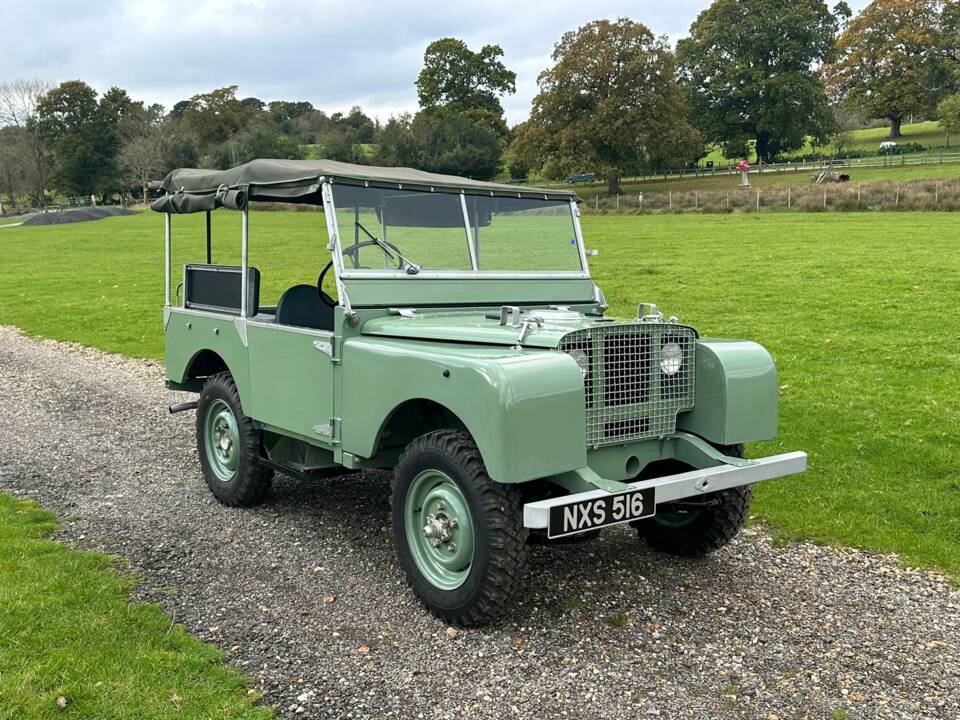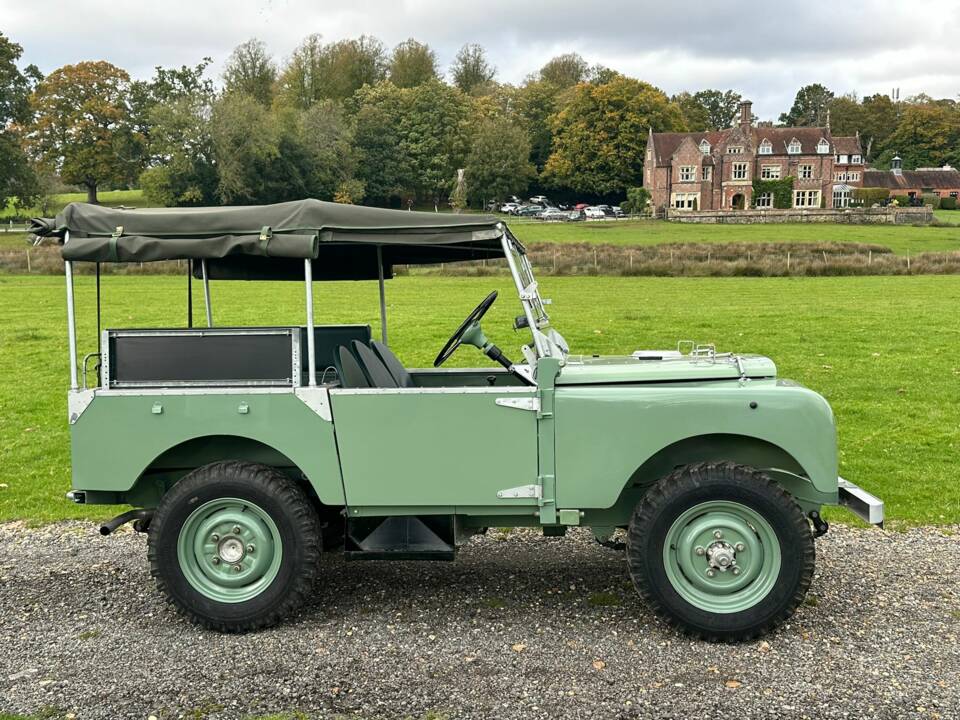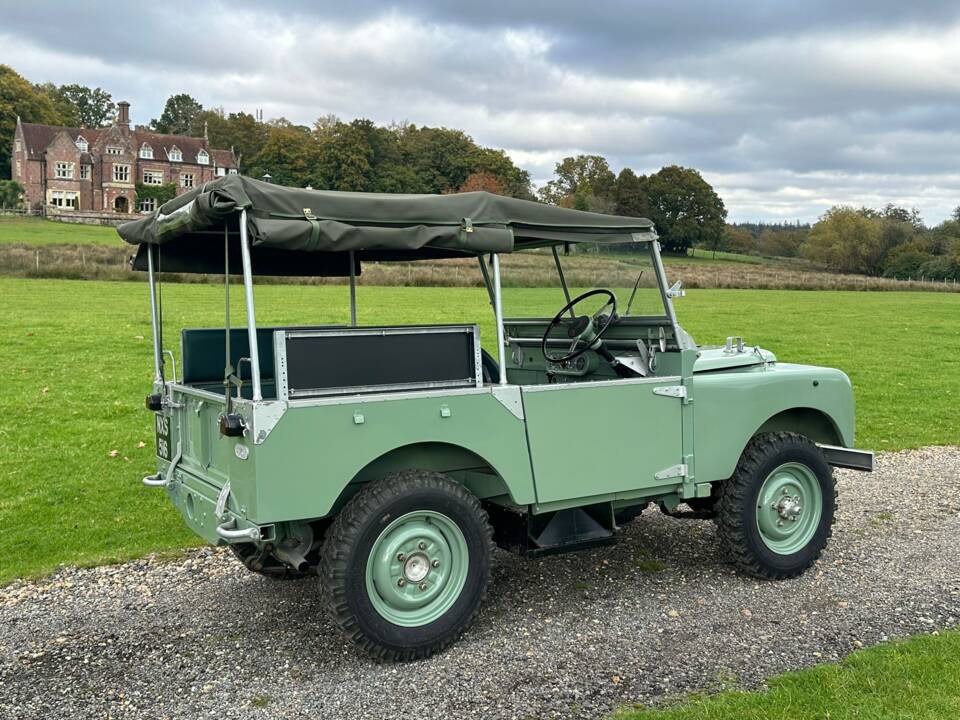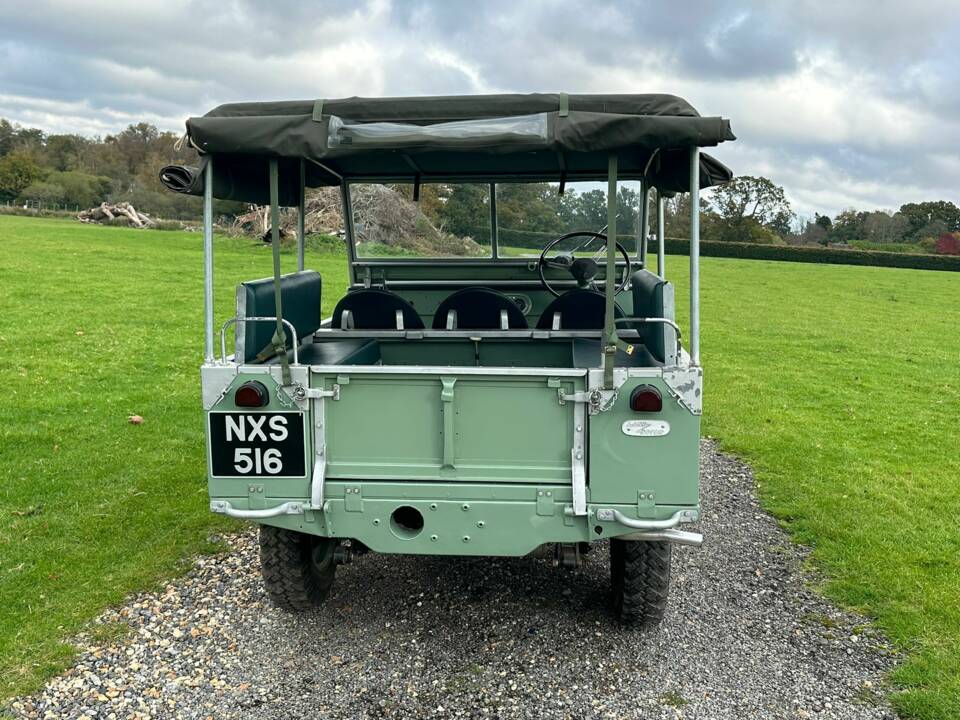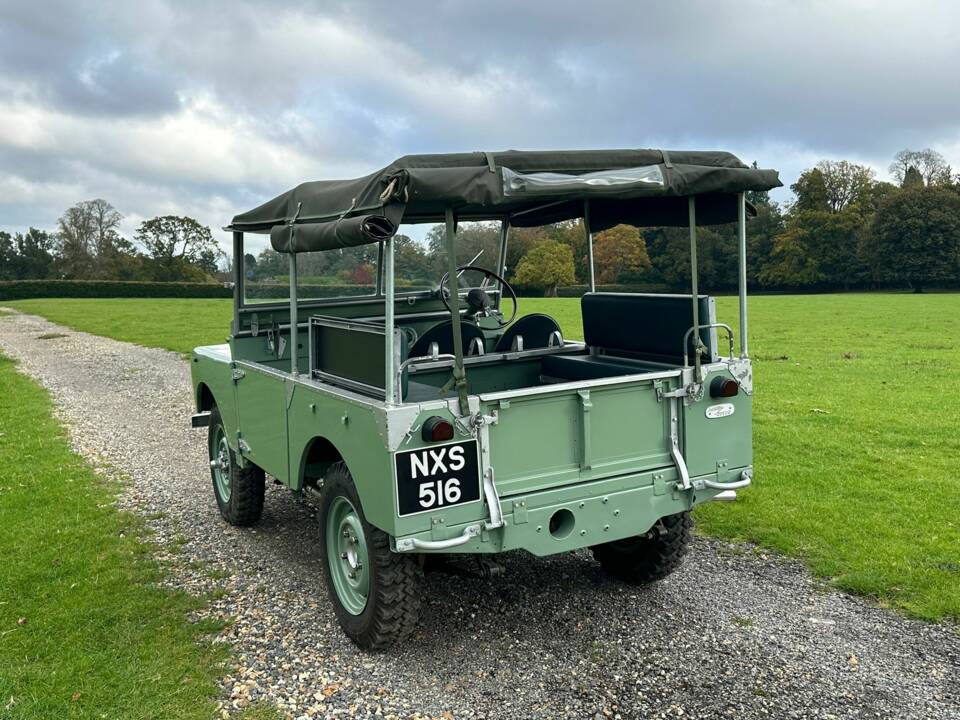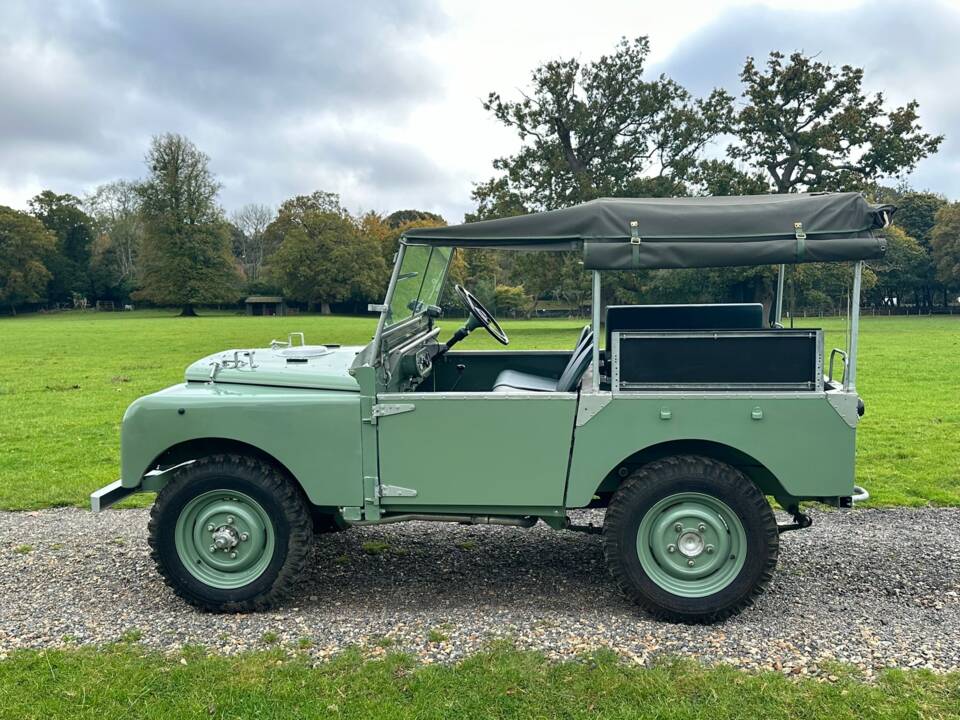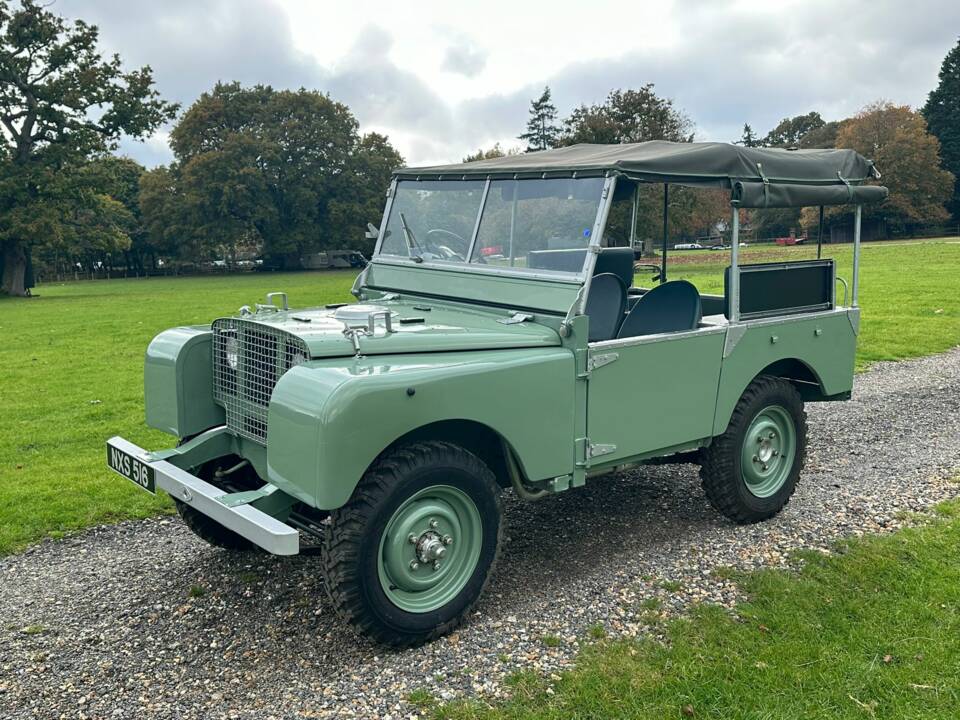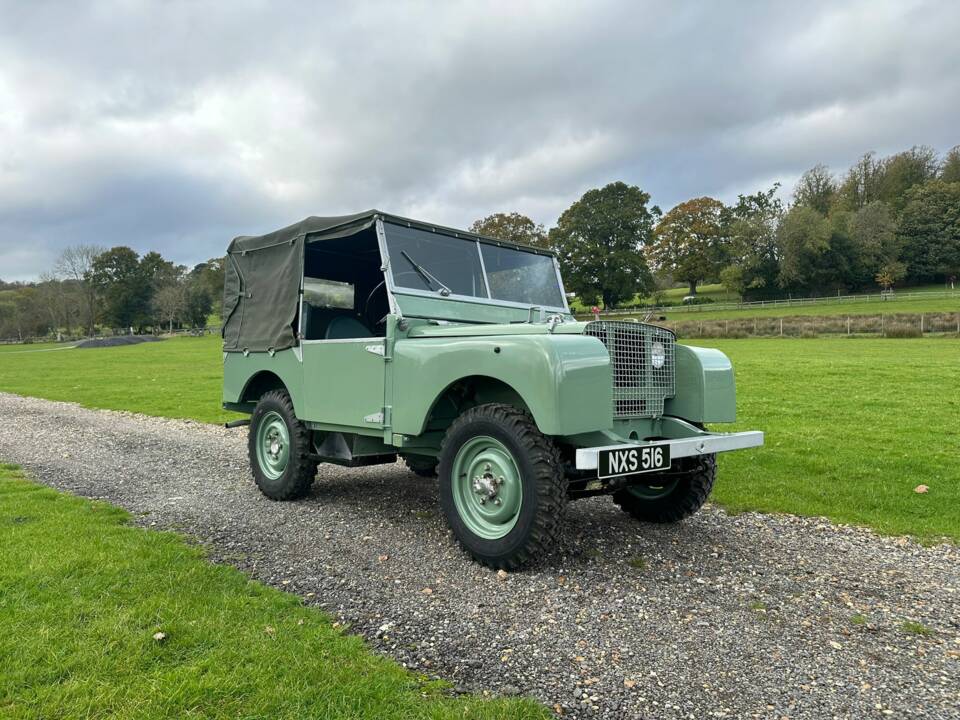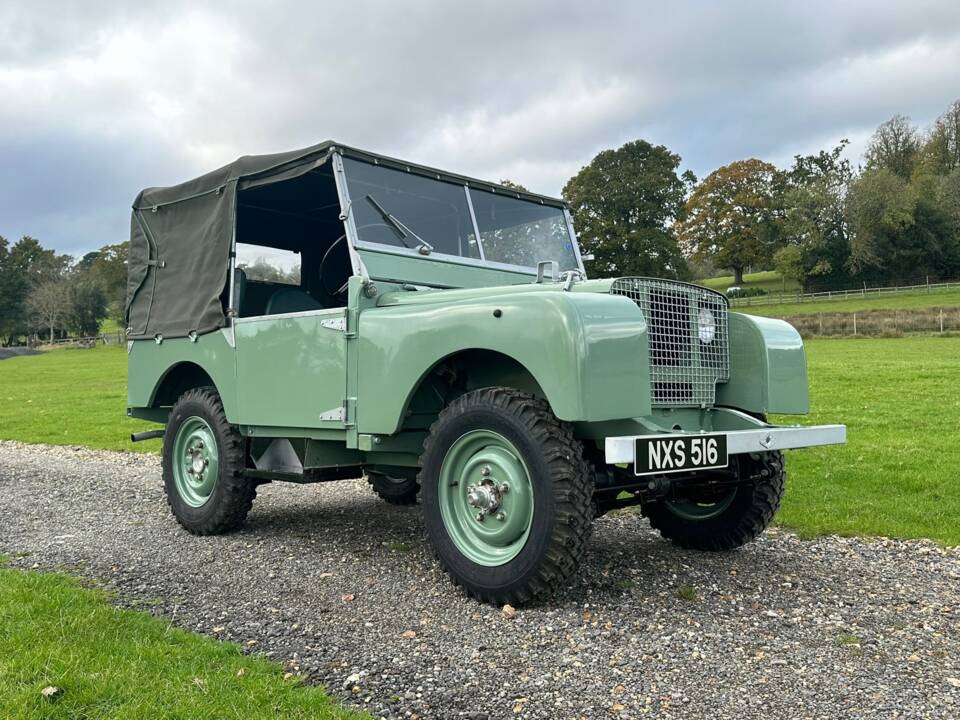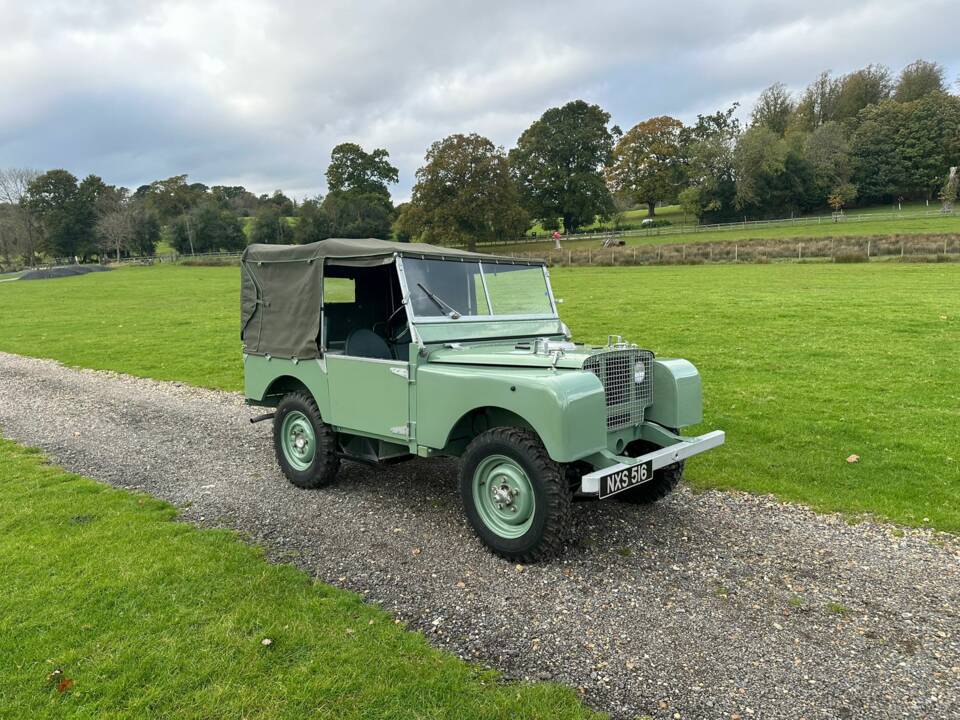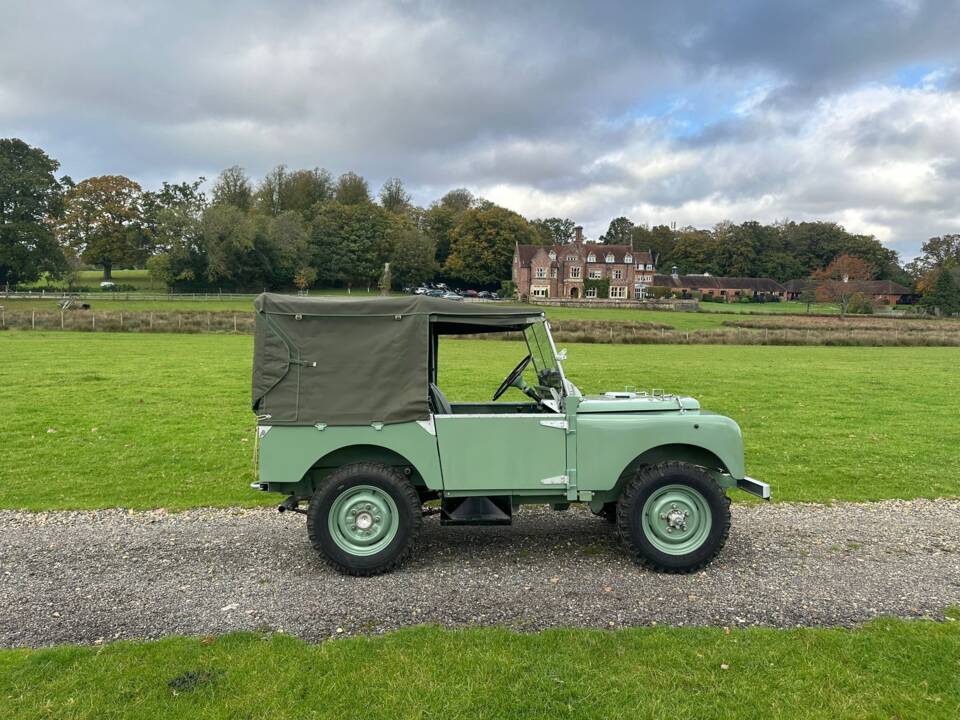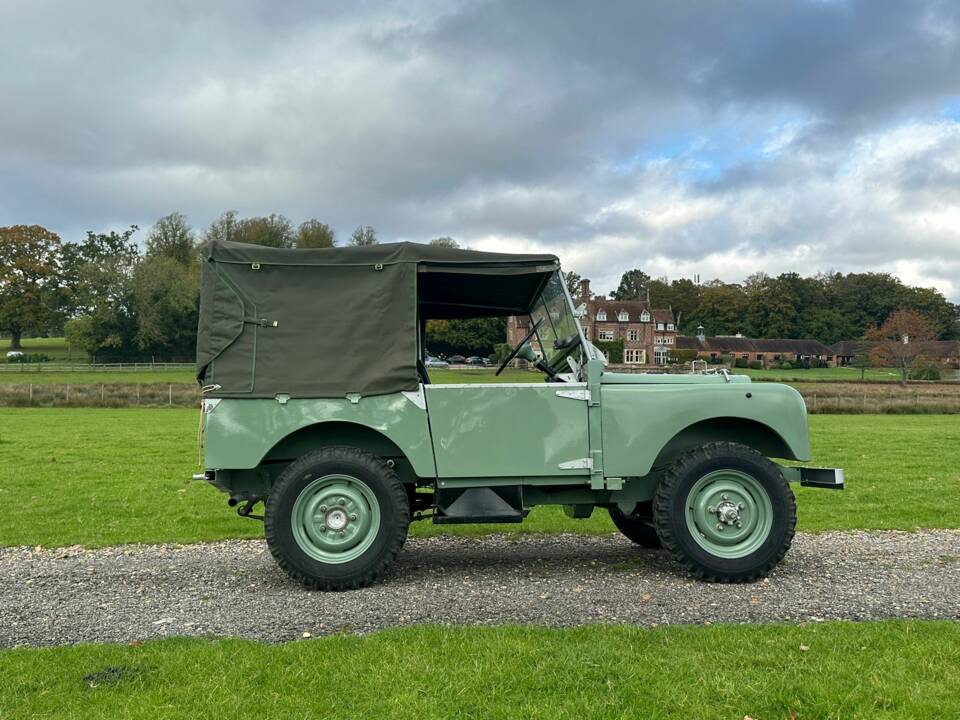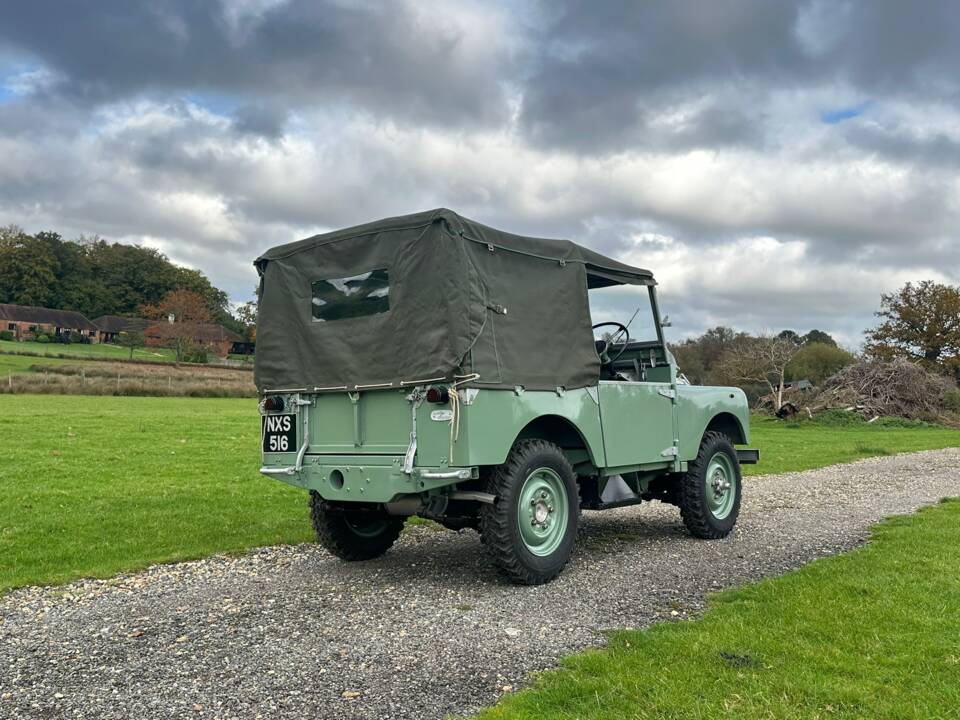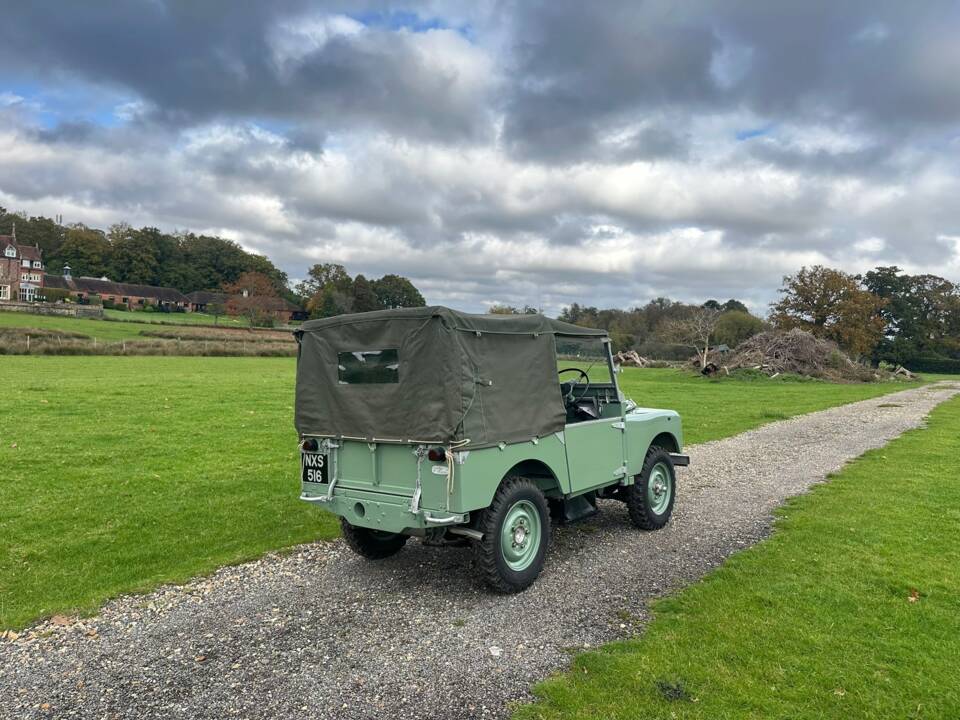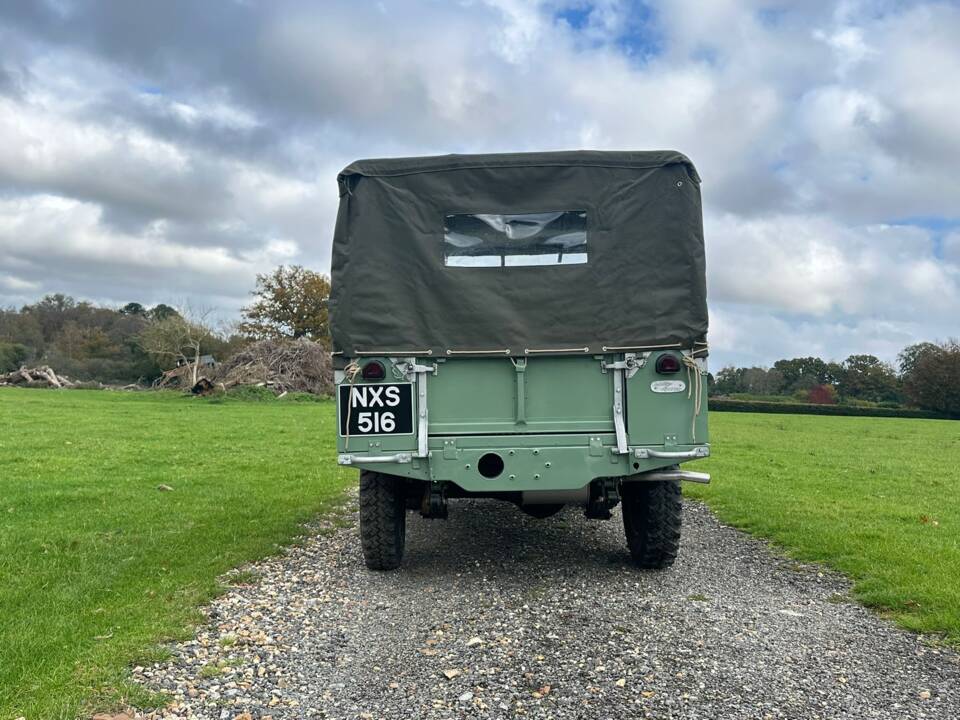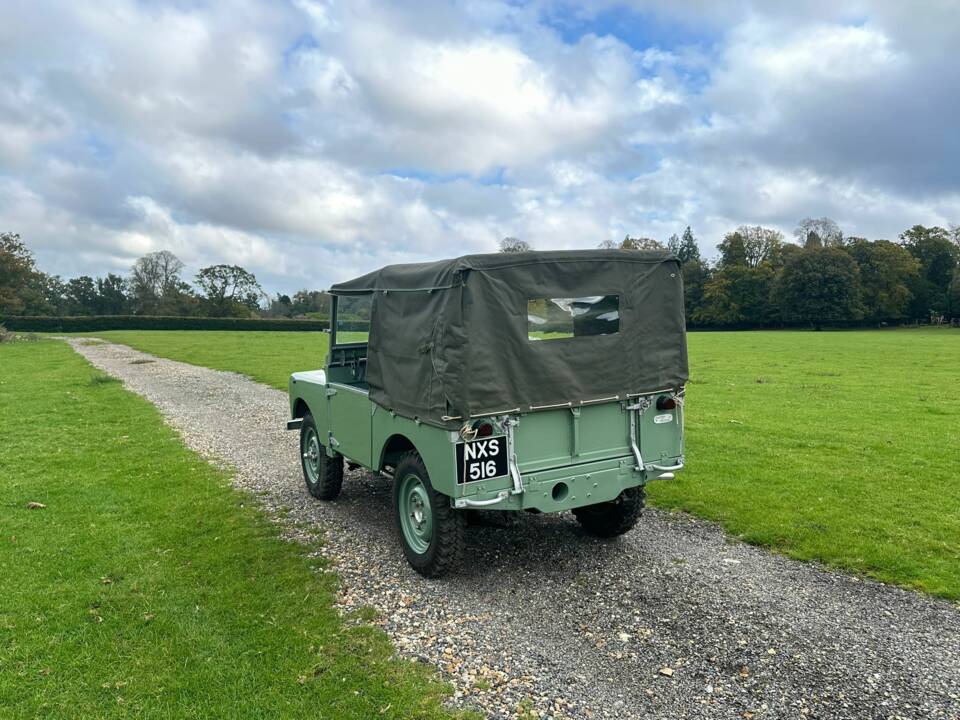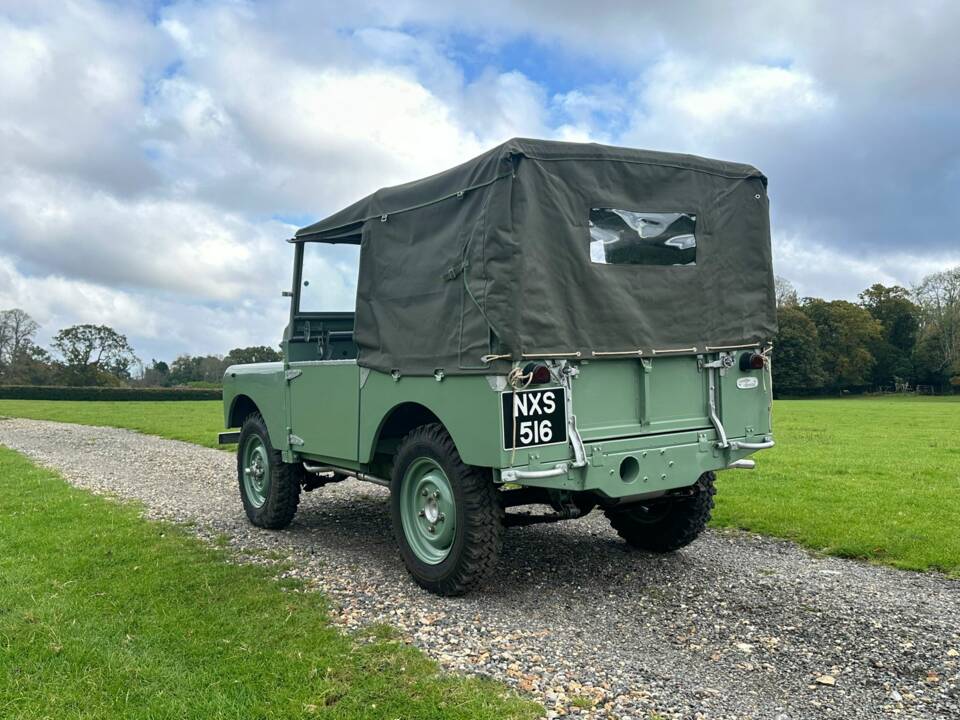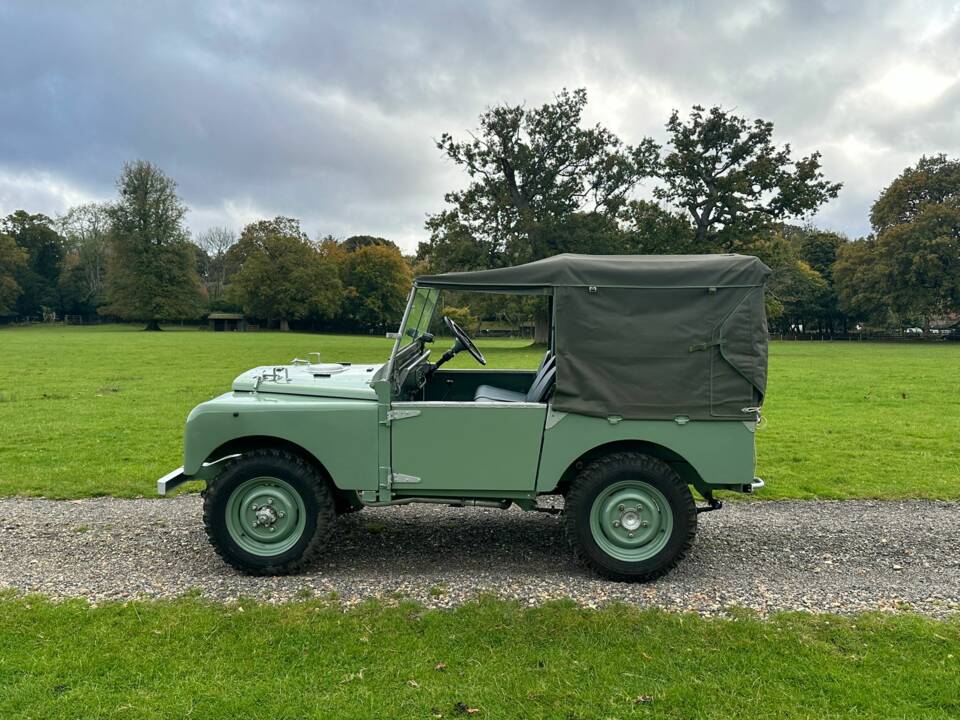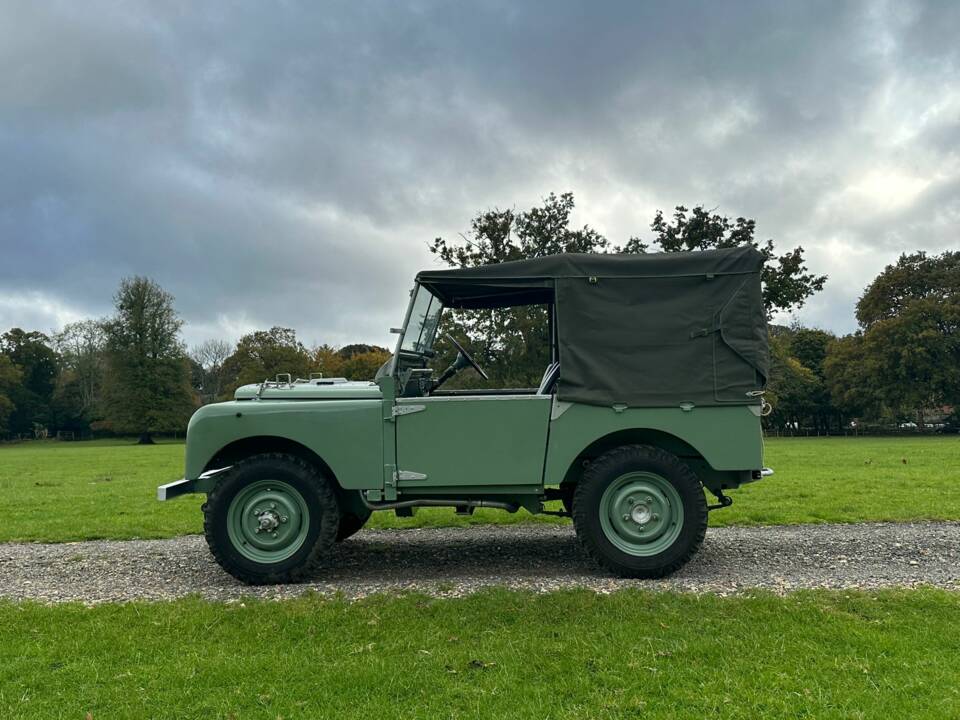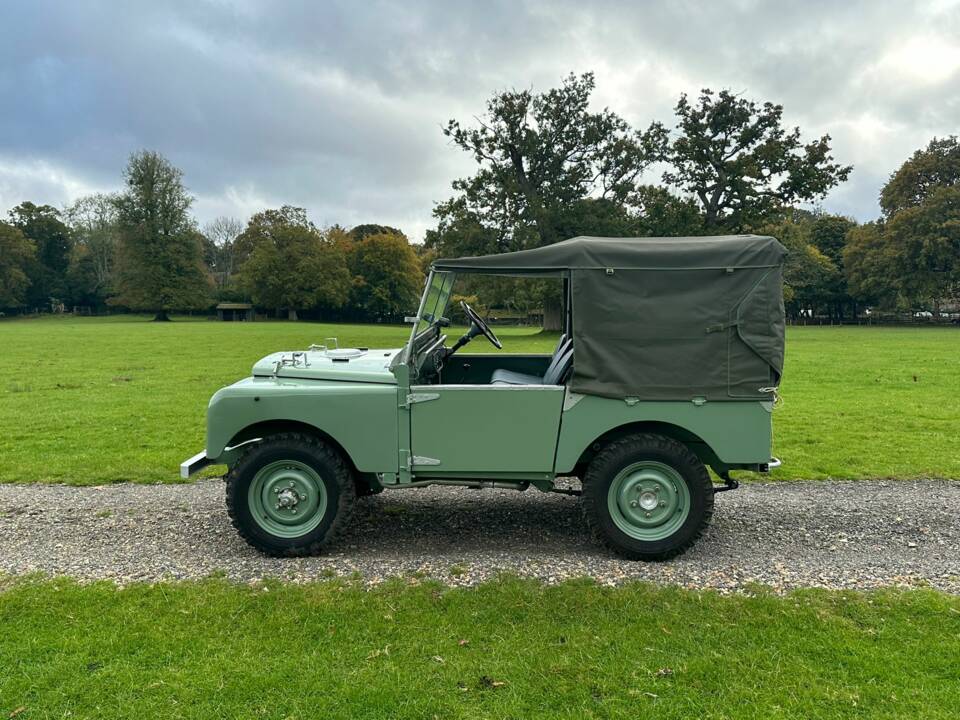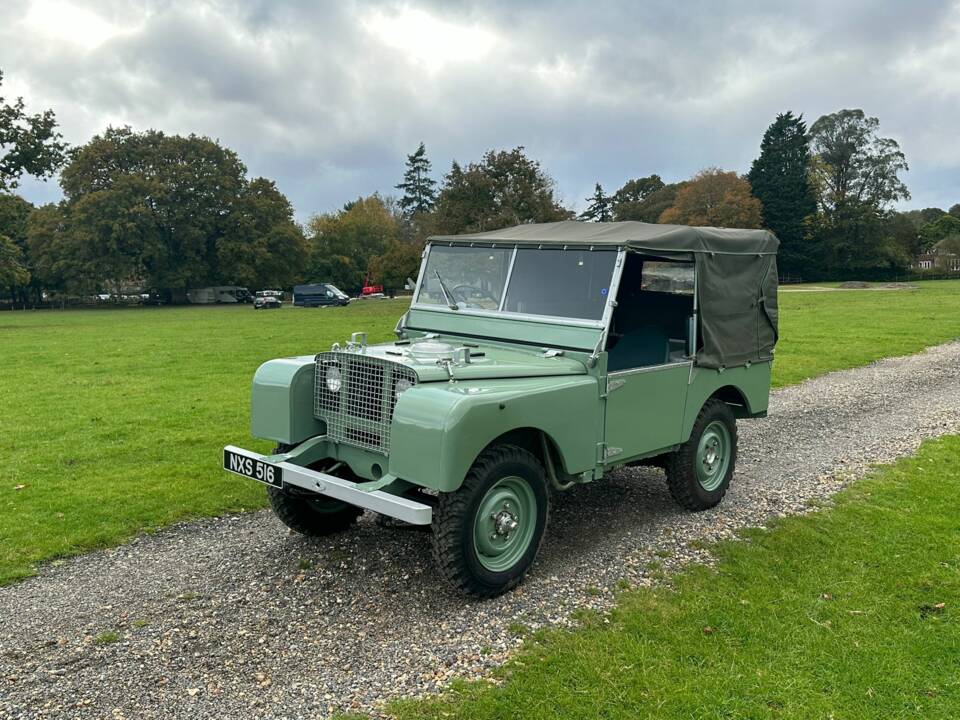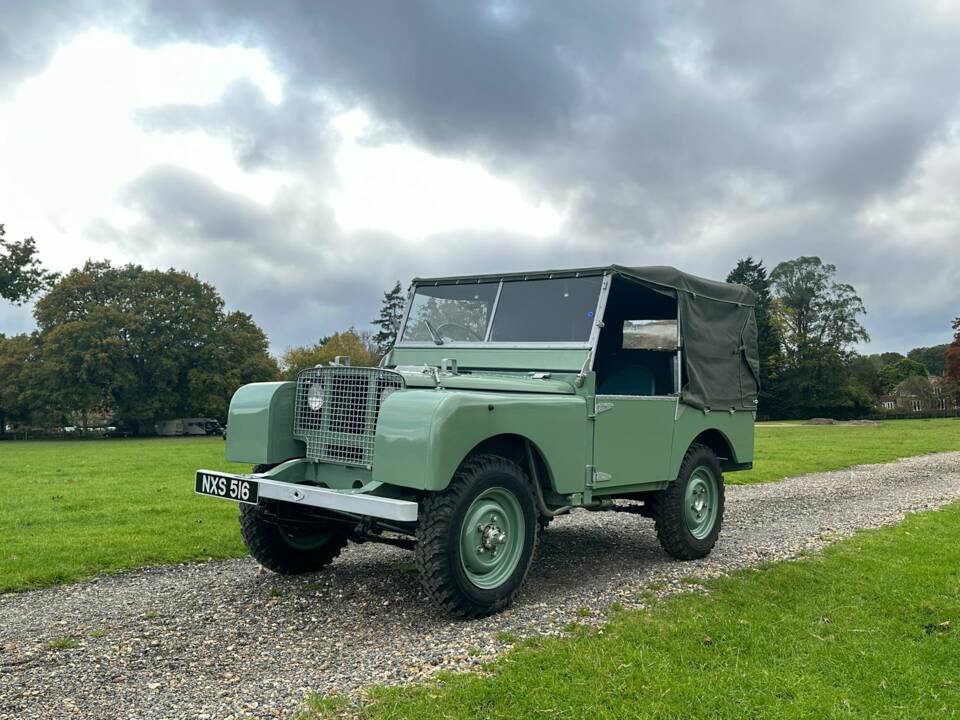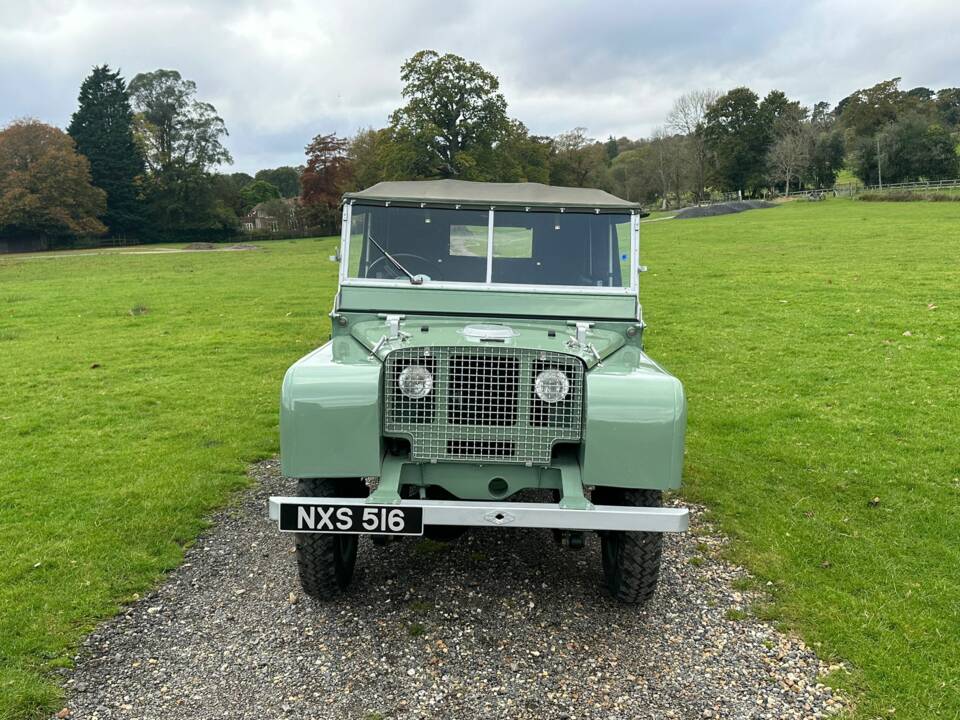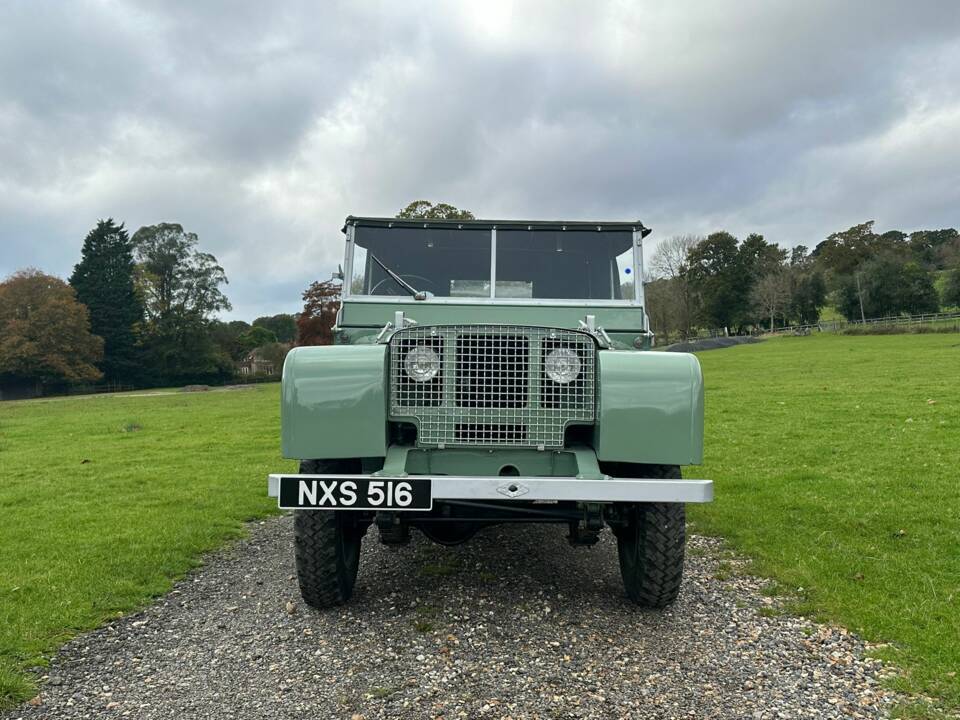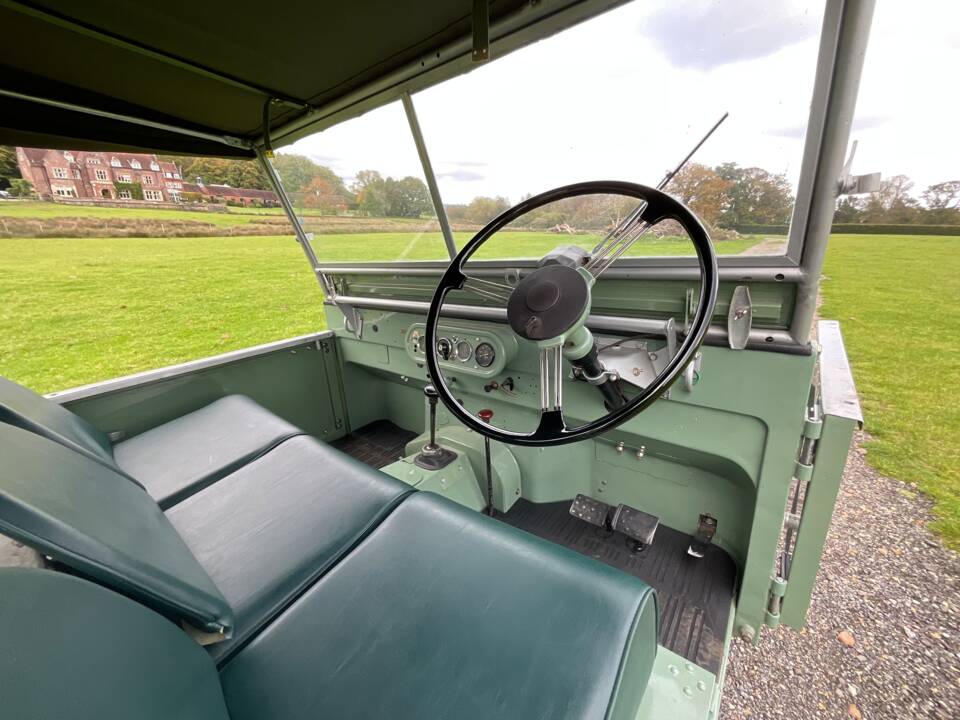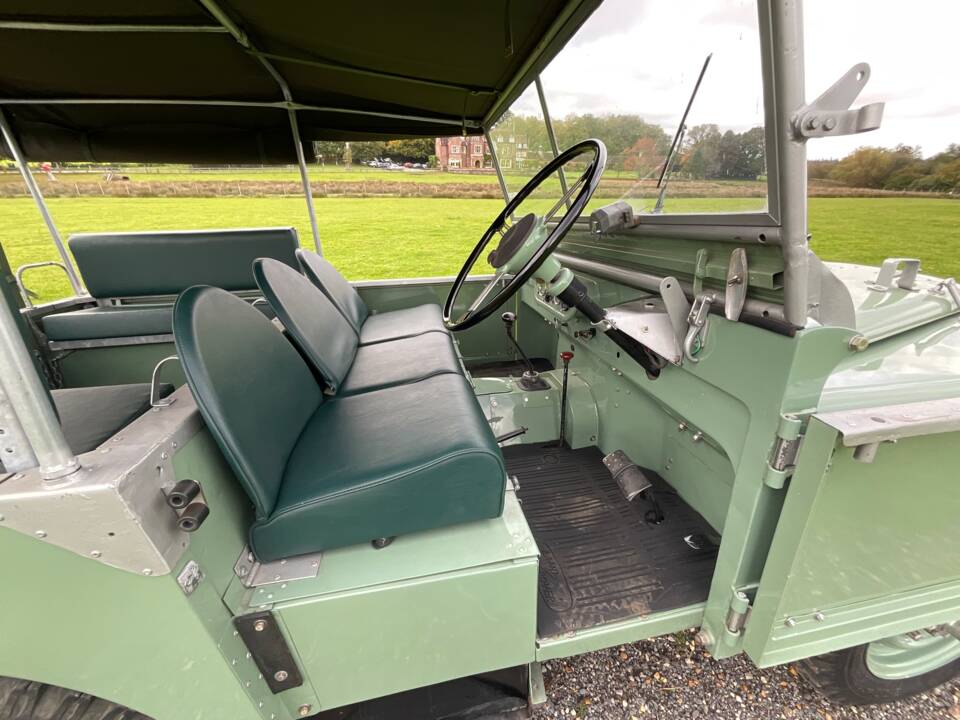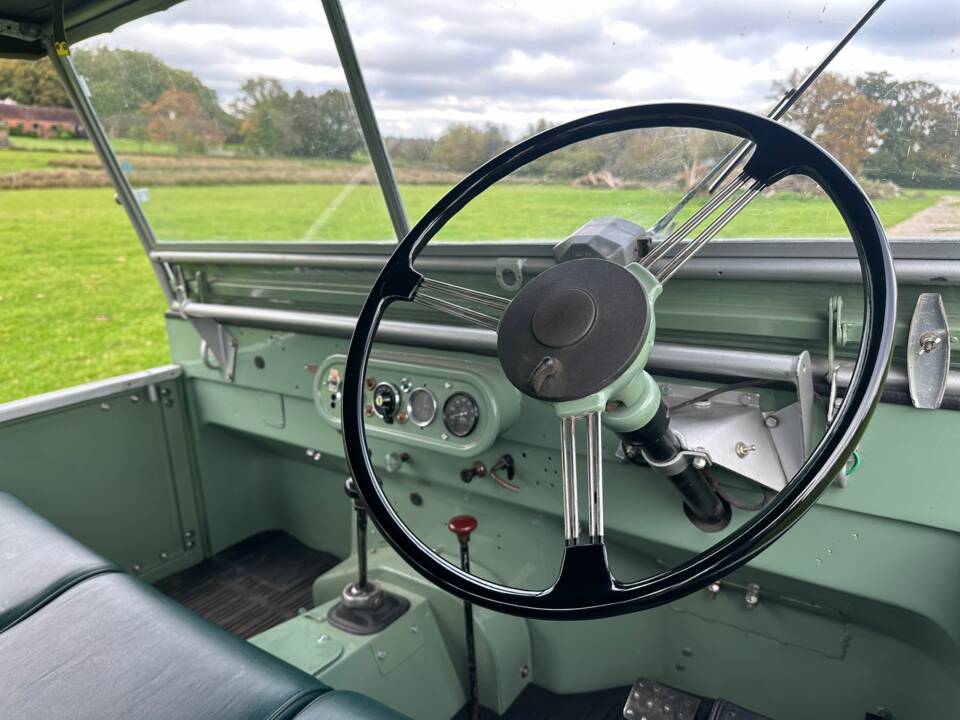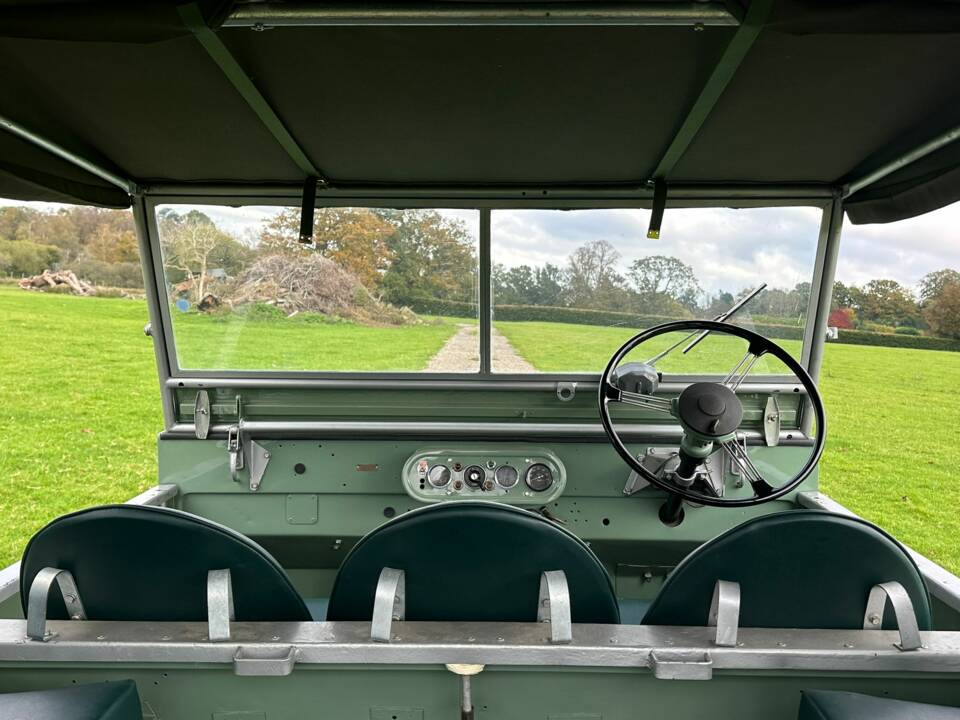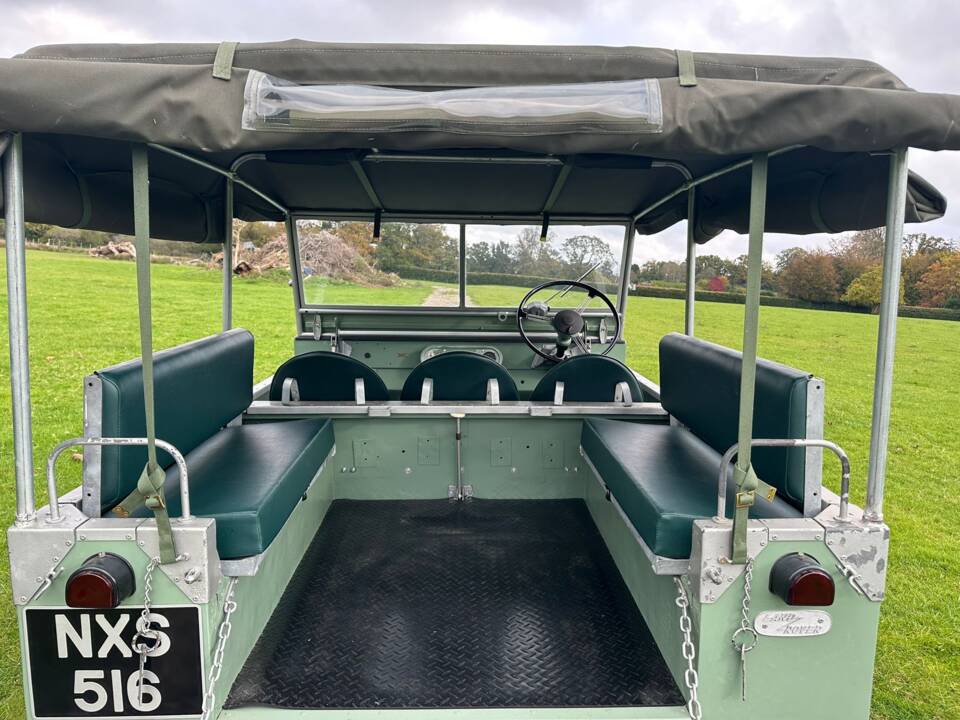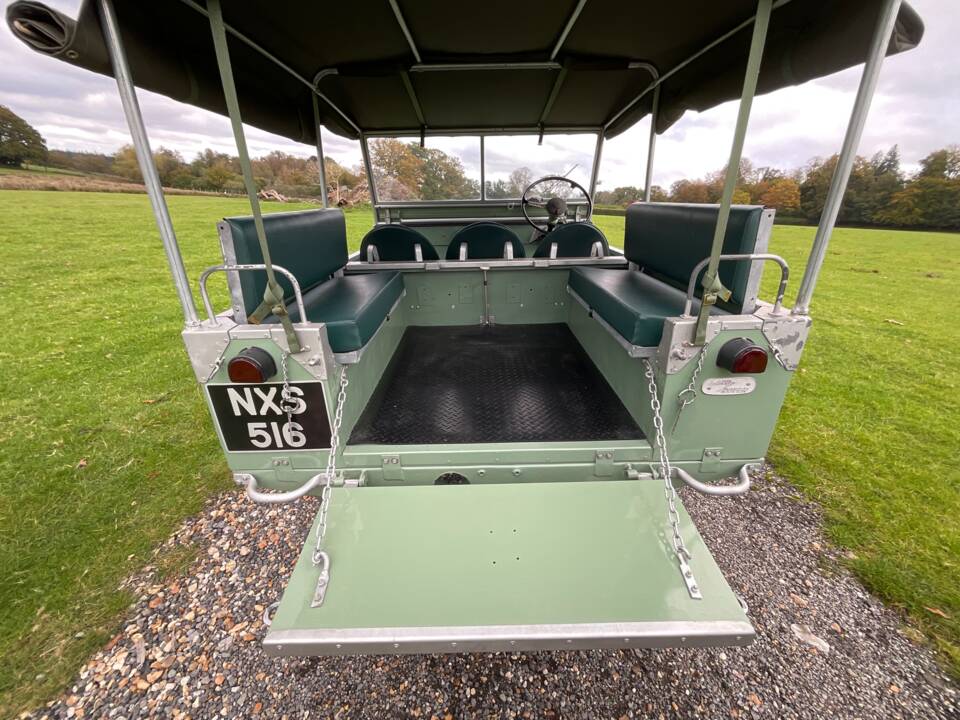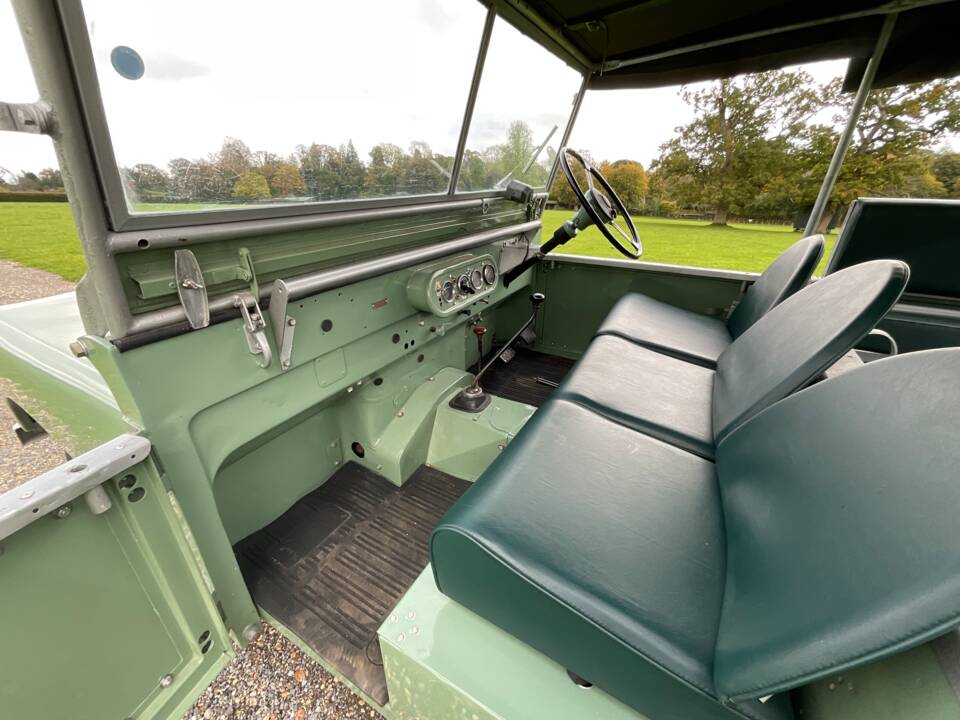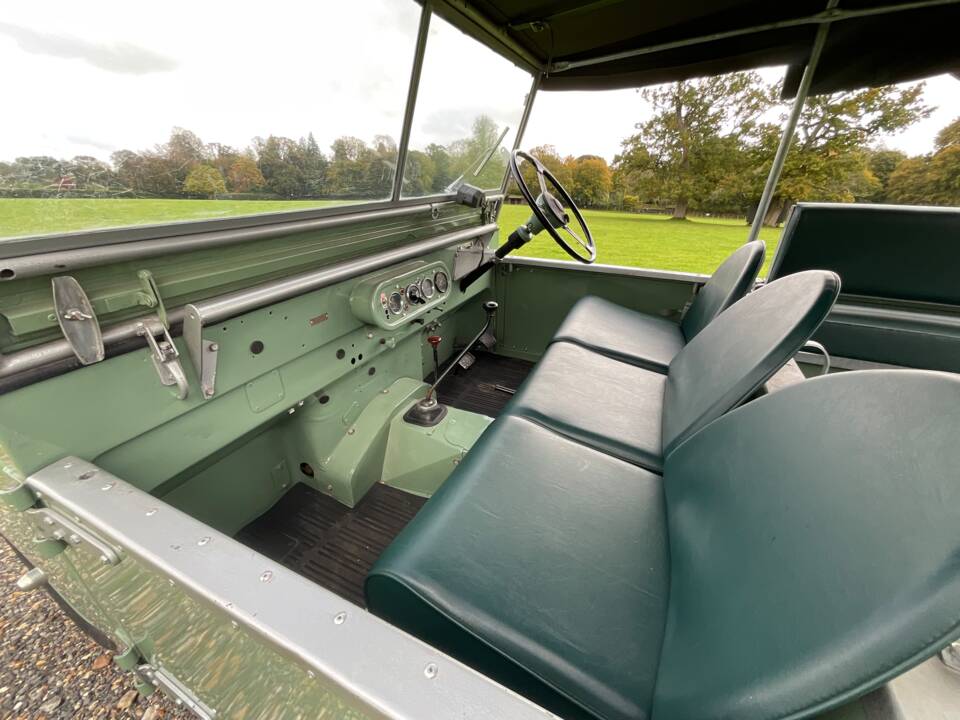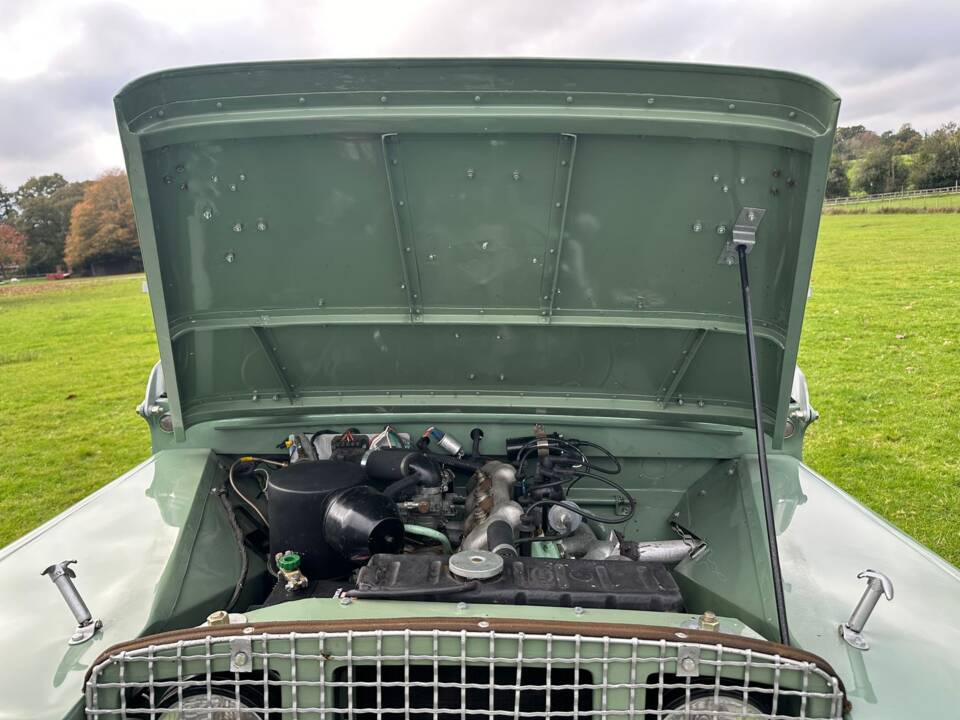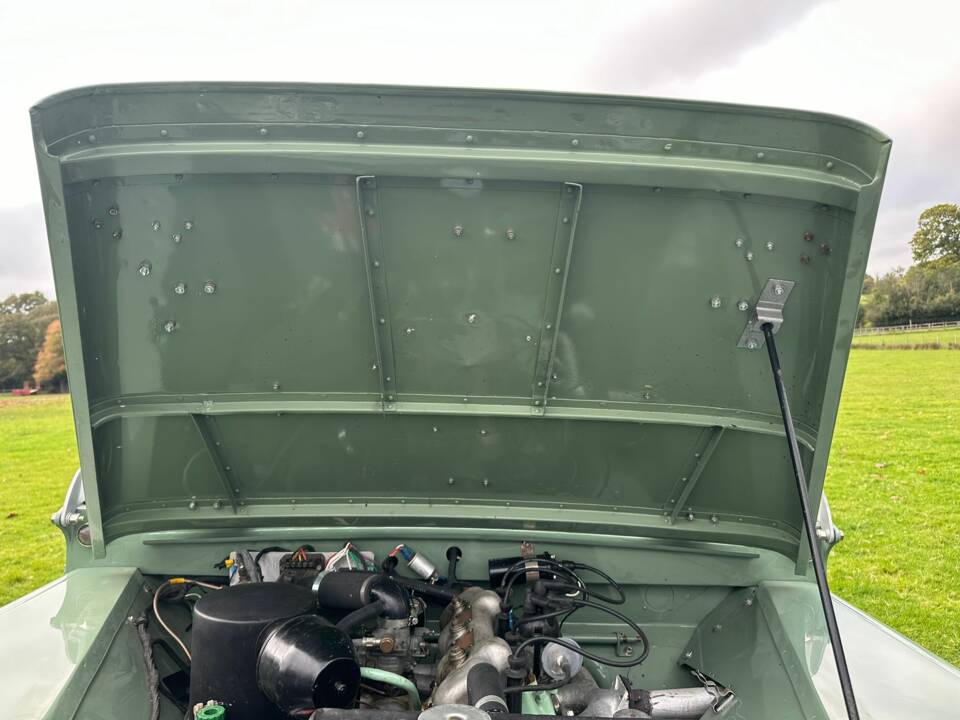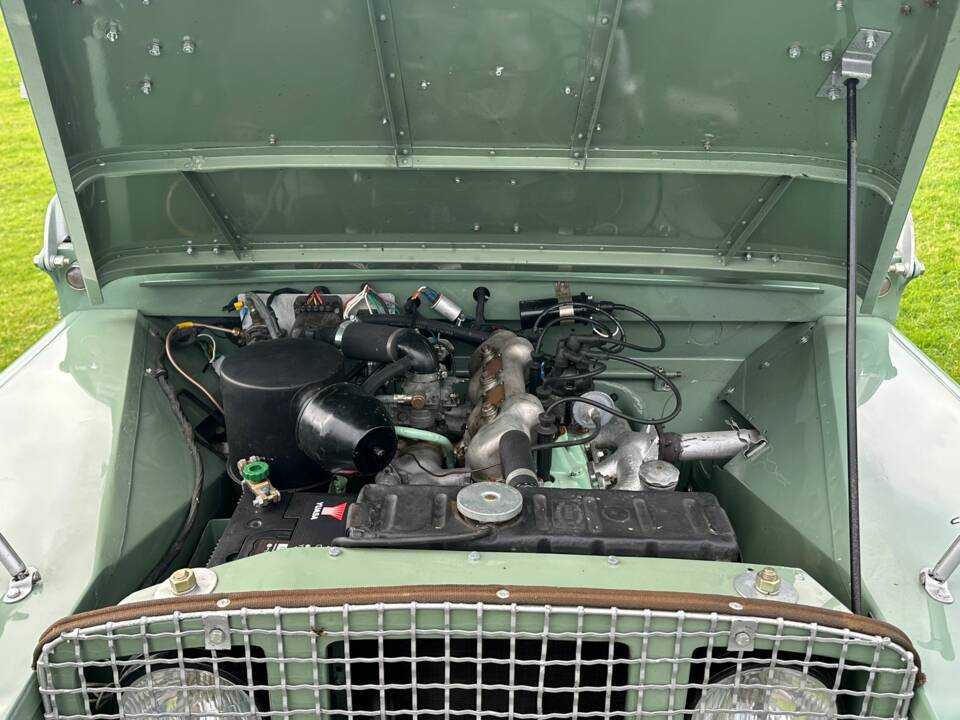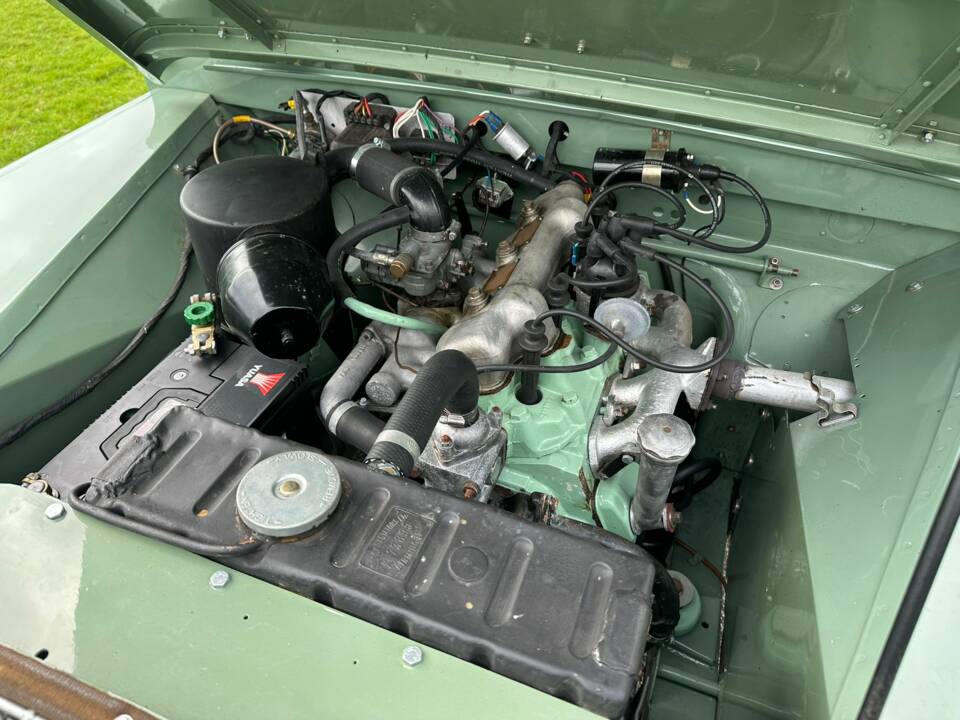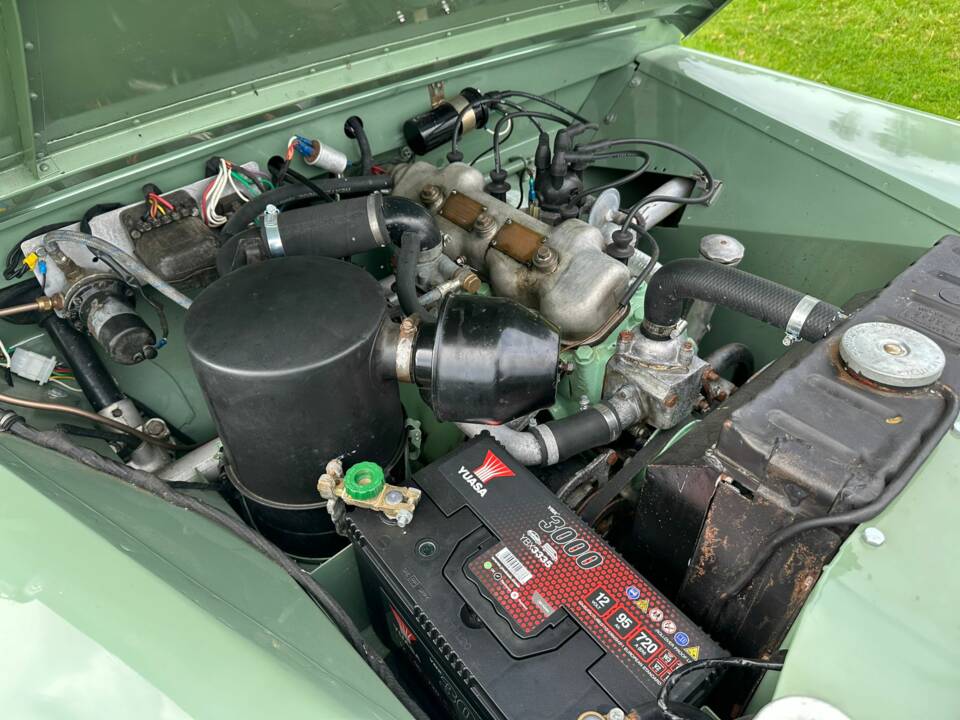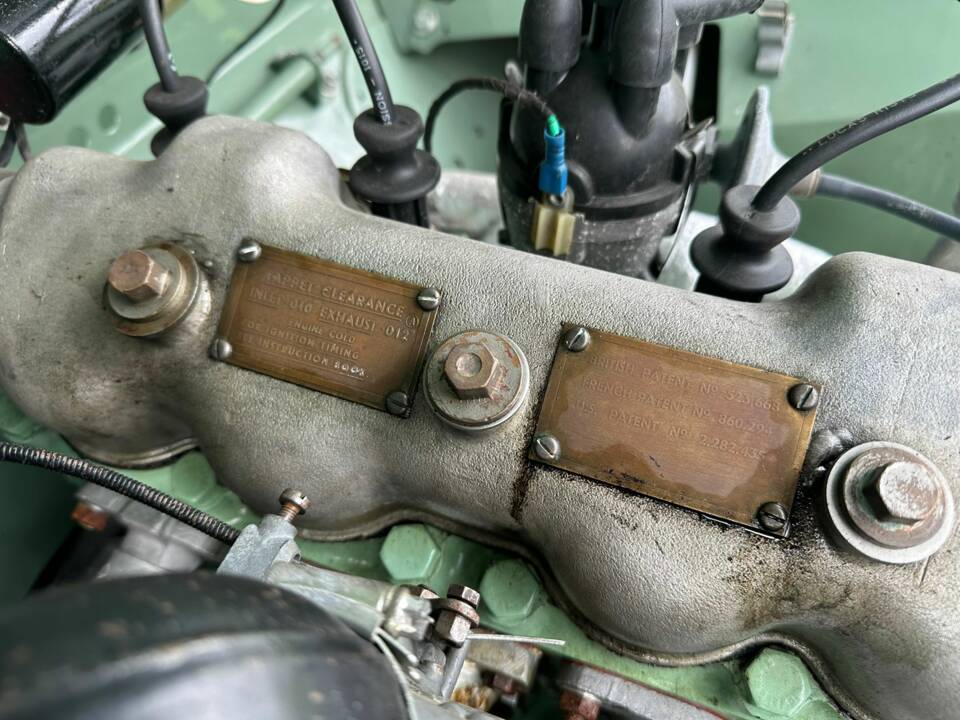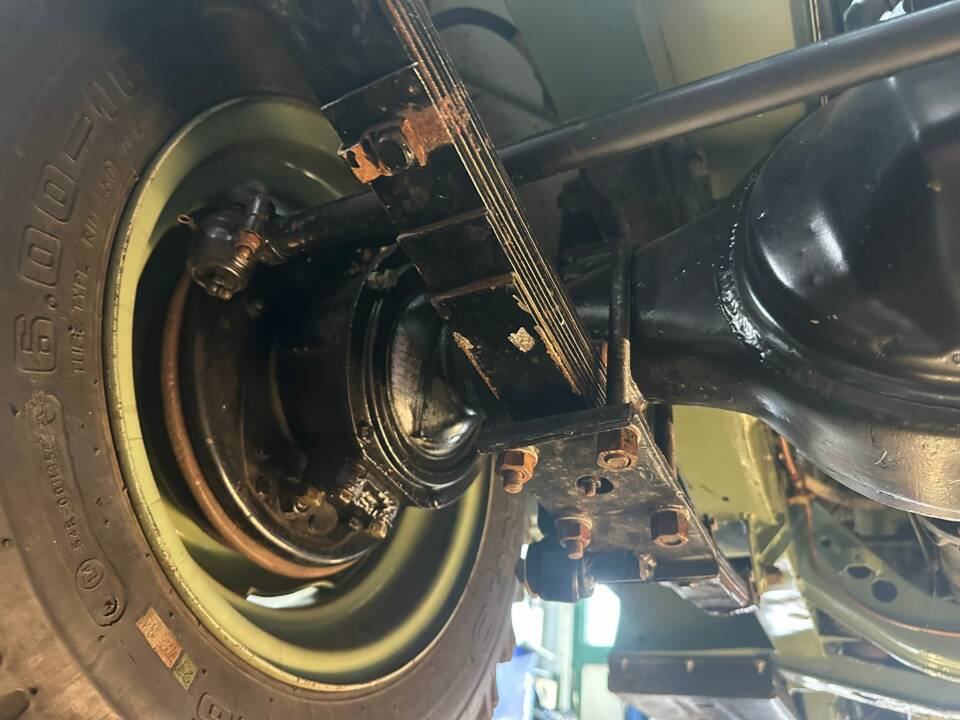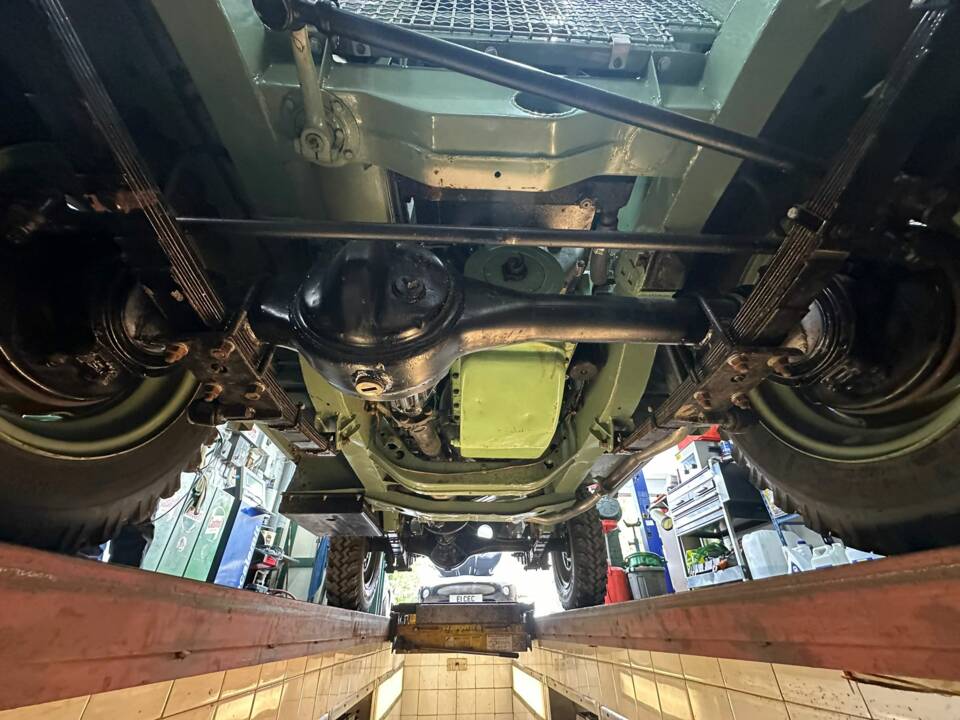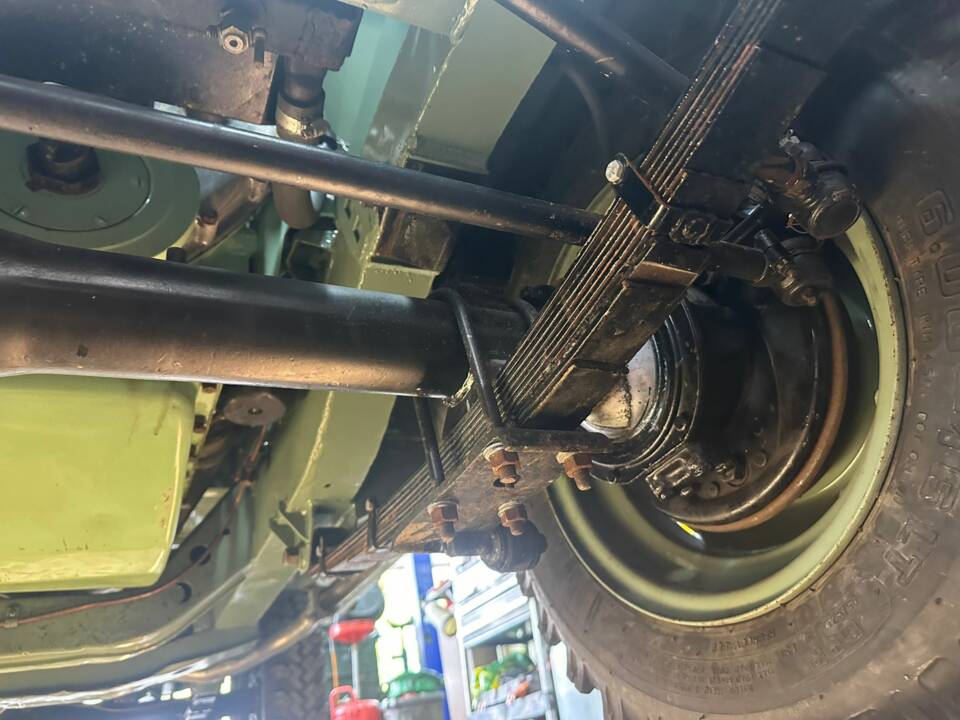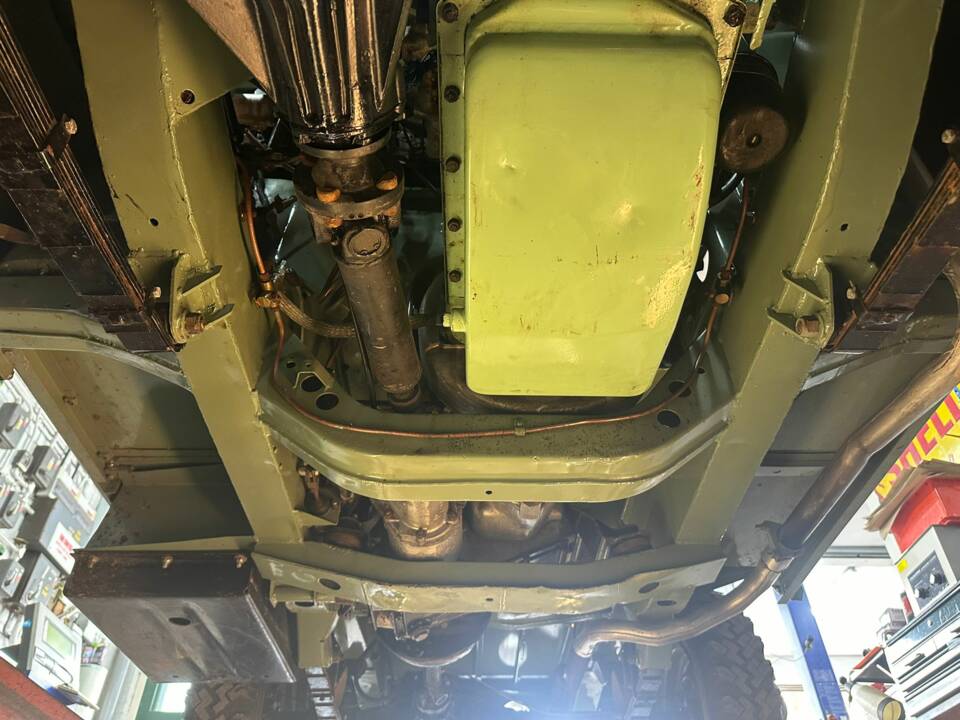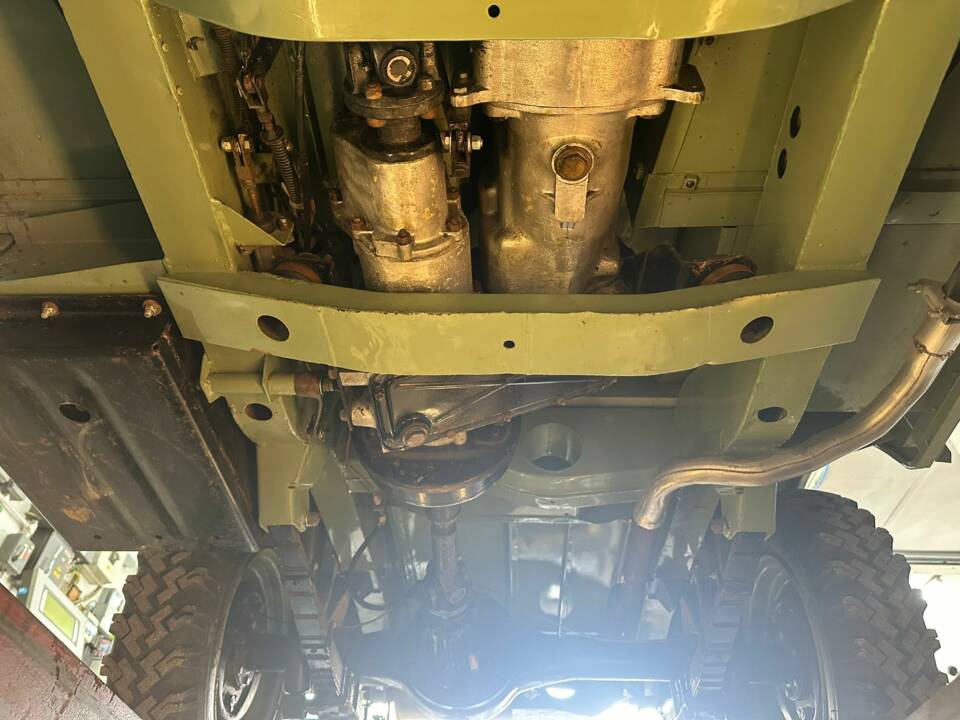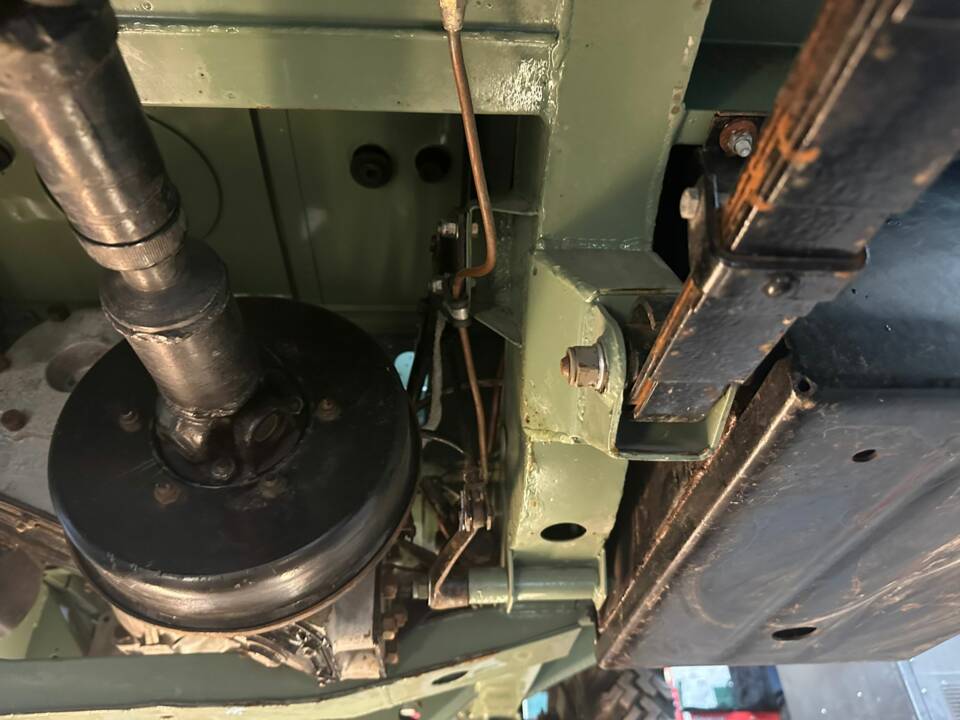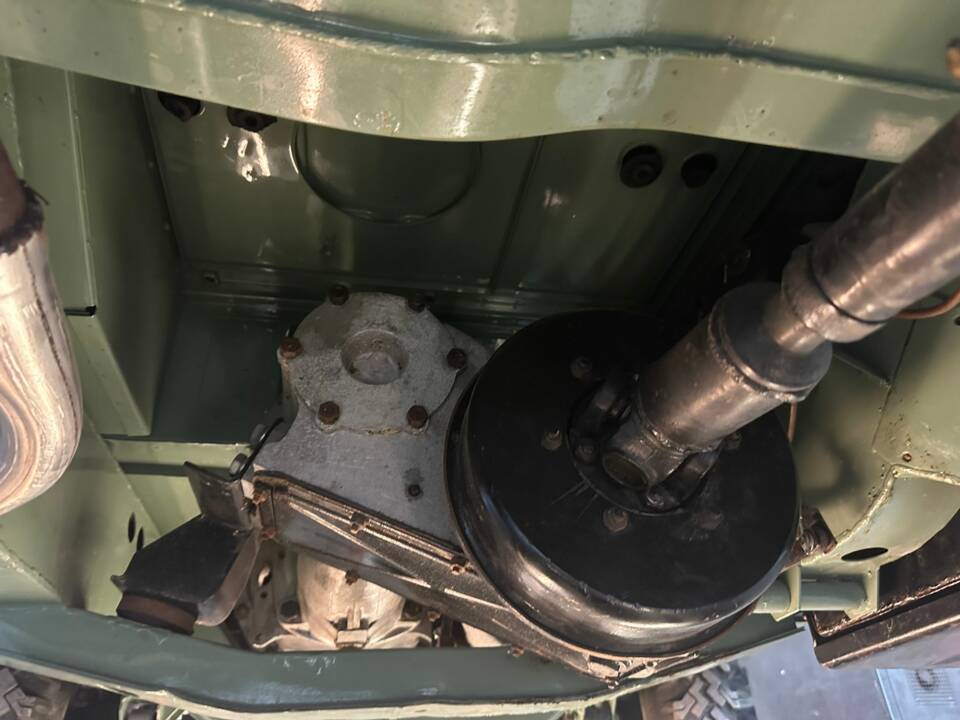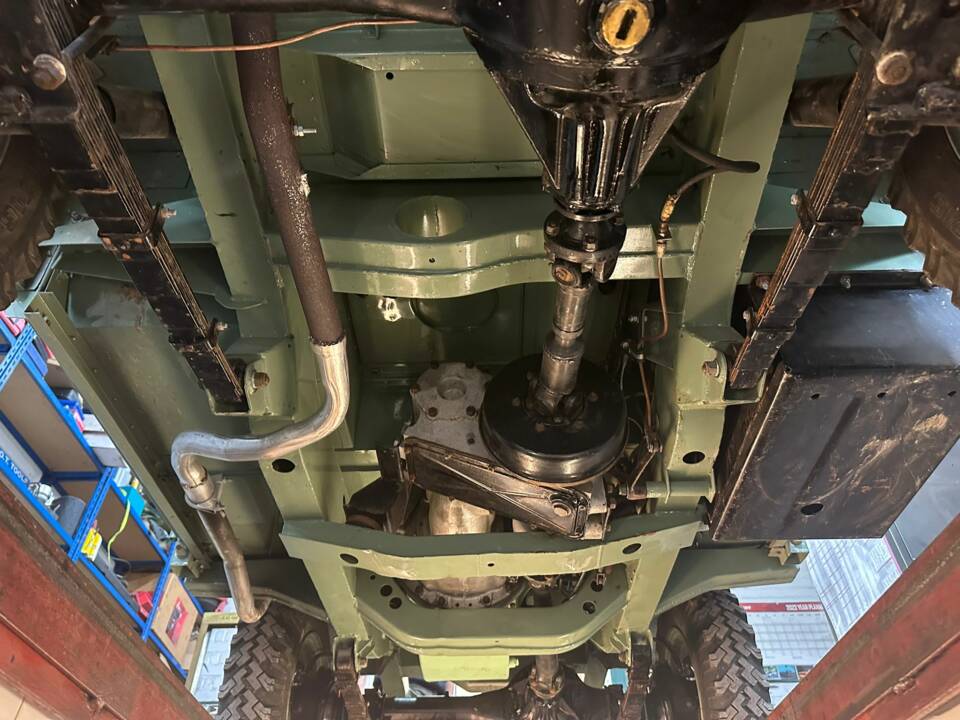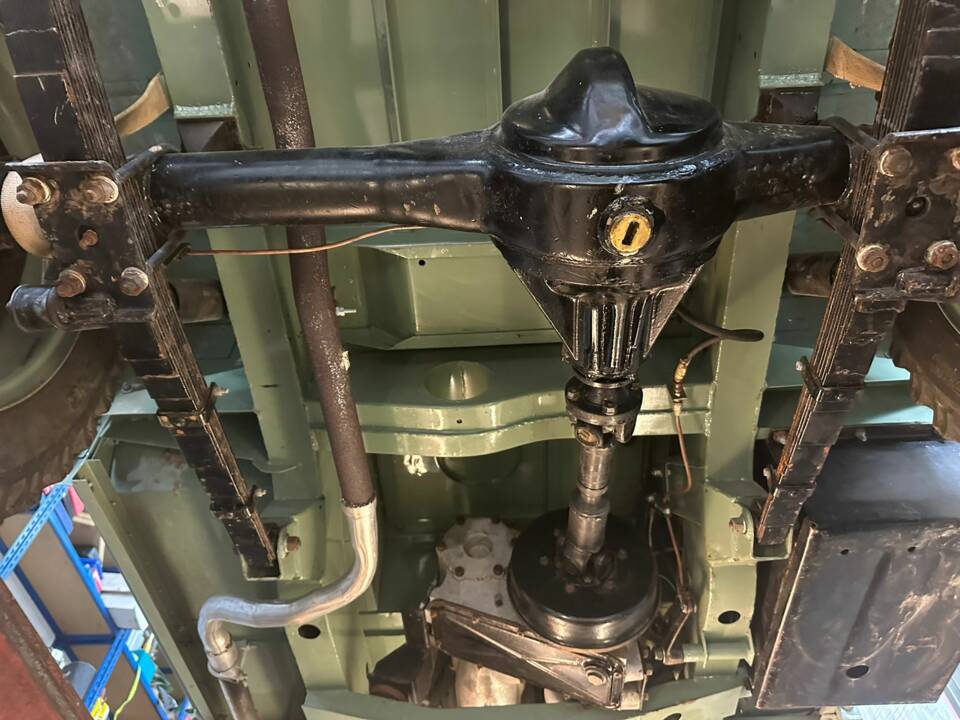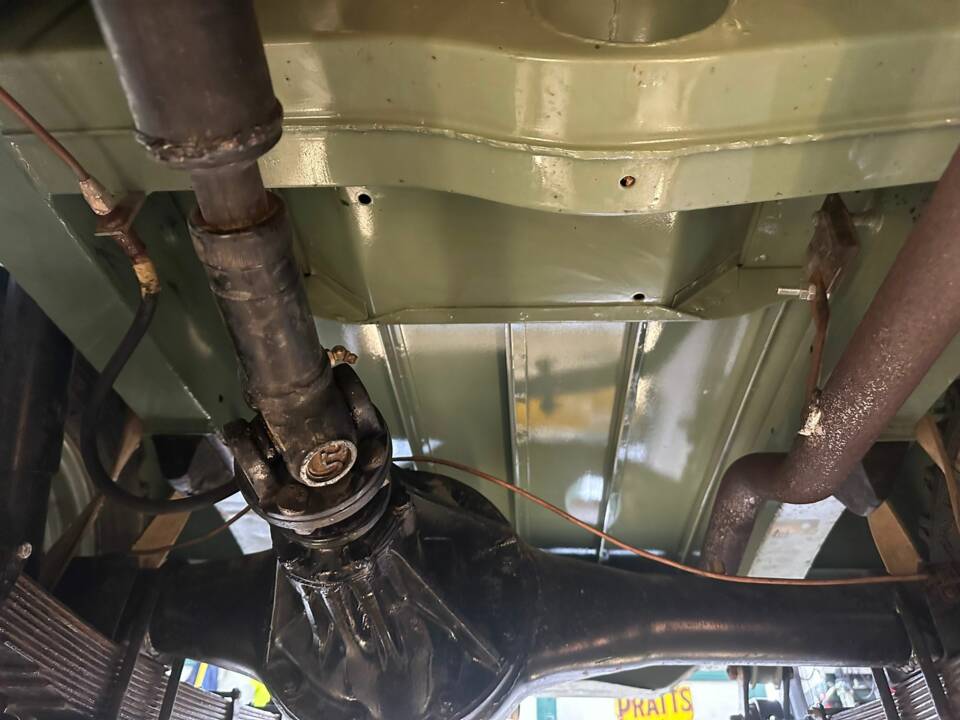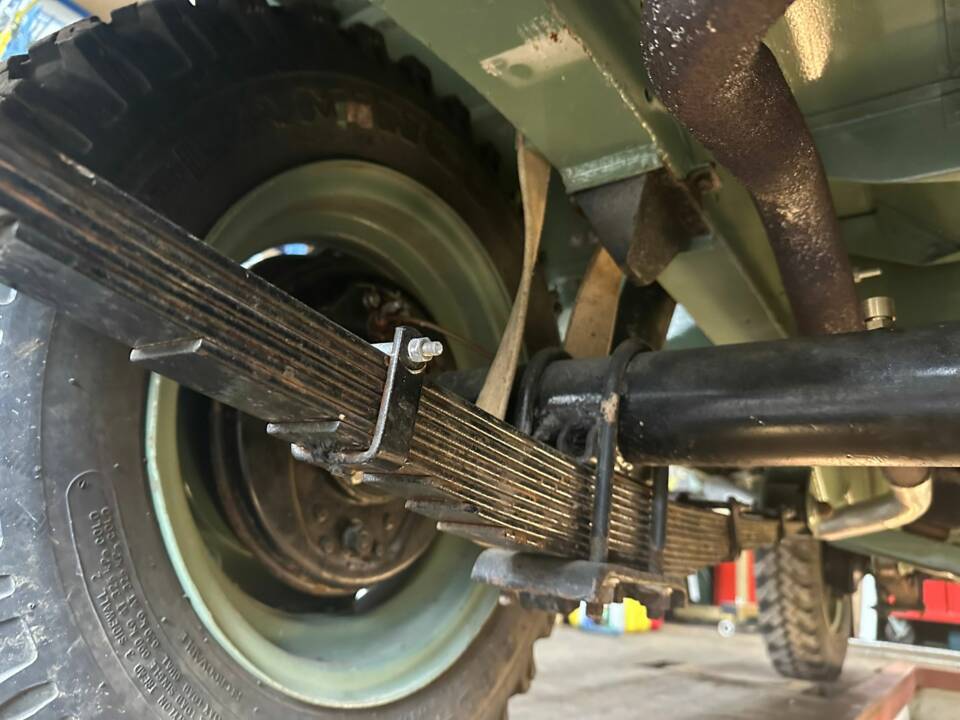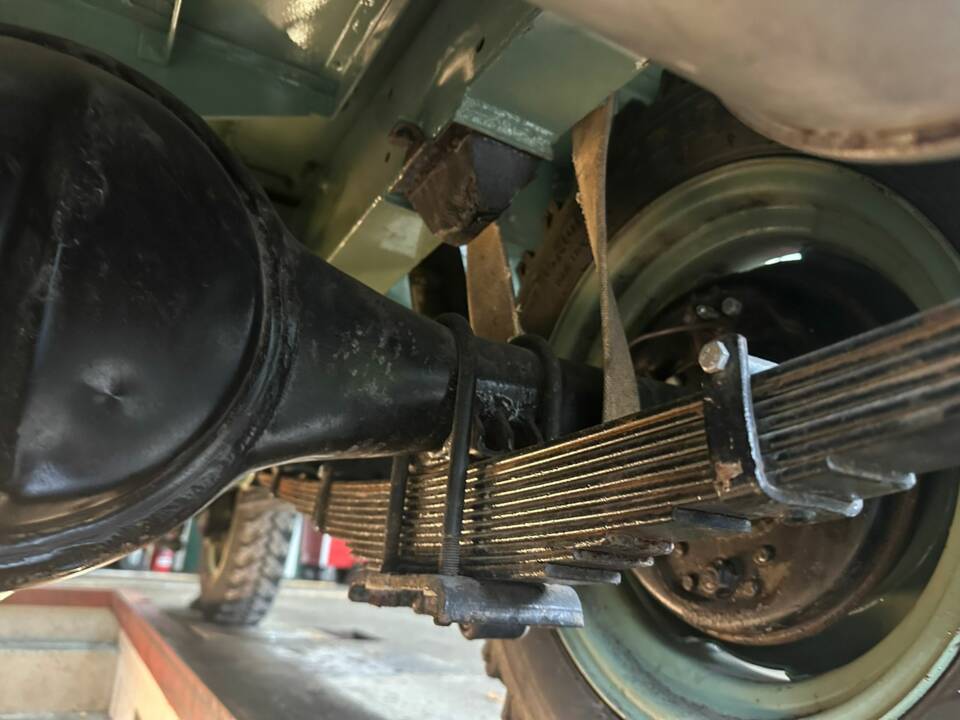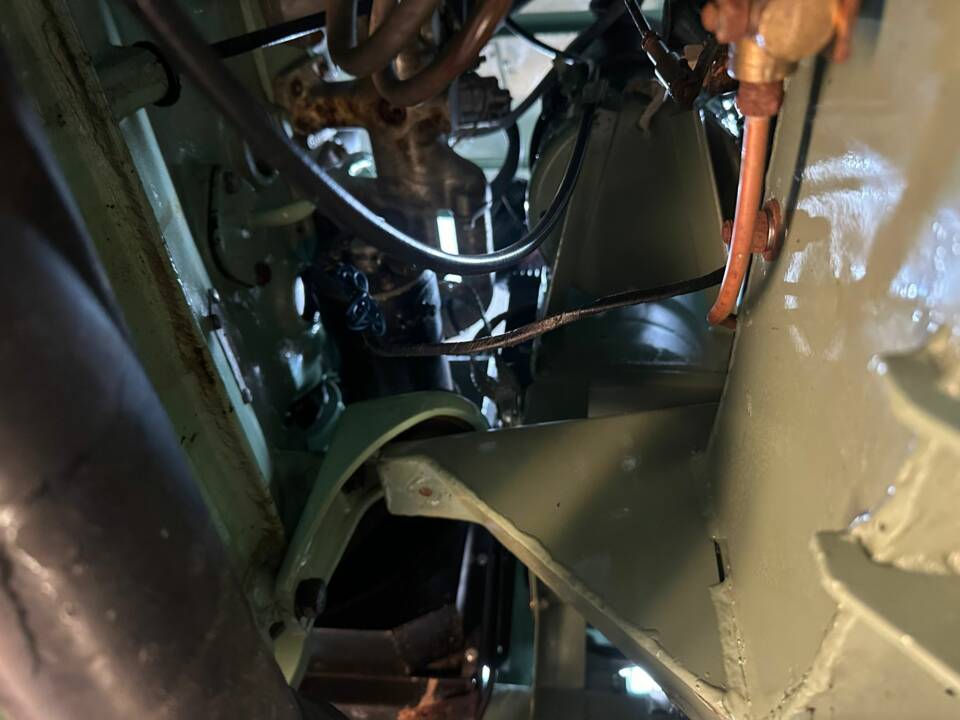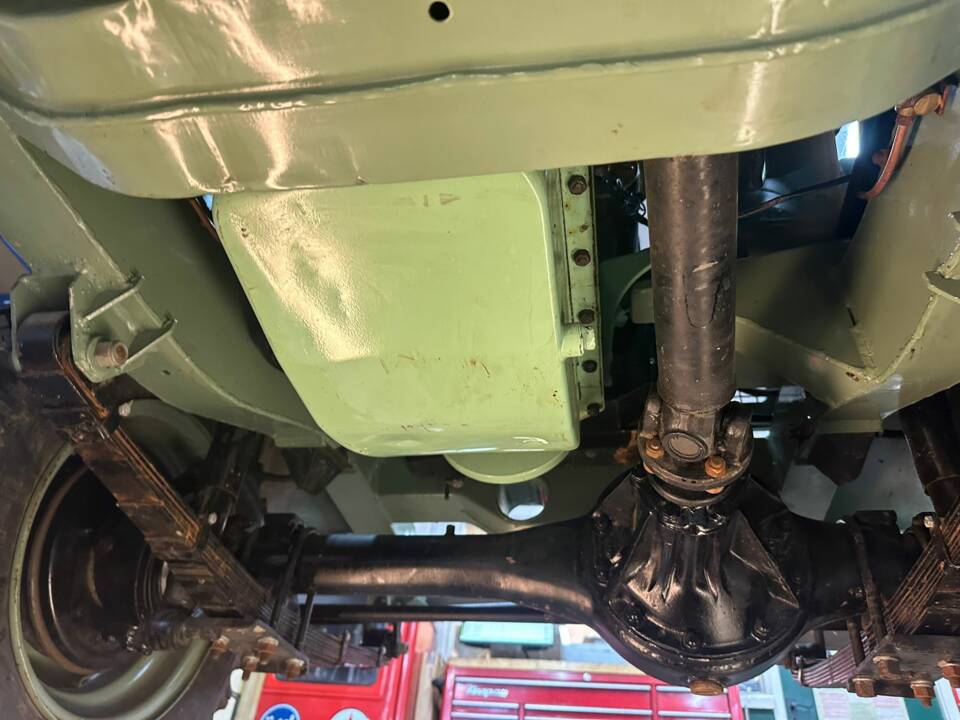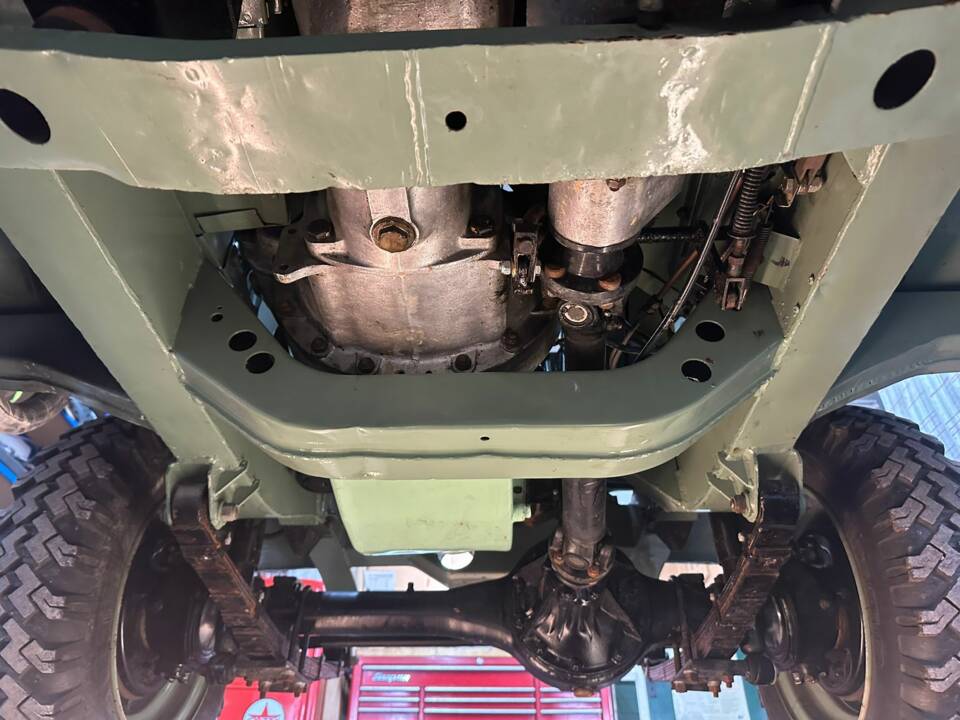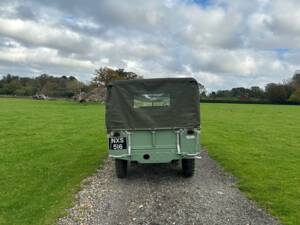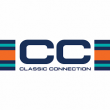1949 | Land Rover 80
1949 LAND ROVER Series 1 80-inch
1949 LAND ROVER Series 1 80-inch
1949 LAND ROVER Series 1 80-inch
Alle Services zu diesem Fahrzeug
Beschreibung
Designed by Maurice Wilks as a ‘stopgap’ vehicle following the second world war in an attempt to ease their reliance on pre-war designs, the Land Rover would go on to be a true cult classic, and an icon of motoring design.
Making use of the post-war aluminium surplus for the body shell and using steel box-sections for the chassis, the Land Rover was born out of a desire for a ‘go anywhere, do anything’ vehicle that would be rugged and dependable, yet cheap enough to put it in range of the working man.
Creature comforts were virtually unheard of, but the permanent four-wheel-drive setup meant that the Land Rover could tackle just about anything you threw at it, outperforming its competition with ease. The Land Rover (or Series 1 as it has become known) is so important, that almost all modern four-wheel-drive cars can trace their lineage back to either the Land Rover, or the US equivalent, the Jeep.
Right from the off it became the British Isles’ old faithful: backbone of the British Army, aid agencies and the landed gentry’s agricultural tour de force. It didn’t take long for the secret to get out, and pretty soon its rugged go-anywhere persona had conquered the world.
Numerous revisions were made along the way, with selectable four-wheel-drive being added in 1950, while the original 1.6-litre engine was upgraded to a 2.0-litre offering in 1952. The chassis was also lengthened several times between 1953 and 1956.
Series 1 Land Rovers are seriously collectable now, and most have been either patched up with whatever was to hand and kept running or fully restored to original condition… like this one.
Recorded as built in April 1949, and therefore of the original 1948 model year with the 1.6-litre engine and ring-pull gearbox (more of which later), this basic Land Rover in right-hand-drive specification for export, was despatched the following month to Lyons Motors Limited of Singapore. This was the typical route for the British Army to get vehicles supplied to the Malay Regiment - which was in the midst of countering a Communist insurgency at the time.
In 1959, once finished in the Far East, the Land Rover was on its way back to the UK for disposal when the ship stopped off in Cyprus. Having just fought its own insurrection and in need of more vehicles on the island, the army offloaded the Land Rover and it continued in service. The completed Land Rover was shipped back to the UK in 2017 and went into storage pending the owner settling into a new home.
The exterior of the Land Rover is finished in Light Green (also known as Avro) and is near flawless in its execution, beautifully complemented by the galvanized exterior bracketry and fittings.
As you would expect on a 1948 model year Land Rover, the headlights are behind the grille rather than peeping through circular holes or having an inverted-T shaped grille.
The lower doors are fitted to the vehicle but the upper door sections have been left off. After commissioning them to be hand-made at considerable cost, the owner discovered that they were actually an optional extra on these vehicles and in warmer climates probably weren’t specified. However, they are there if the new owner wants to put them on and are in a literally unused condition, still bubble wrapped.
Other items not originally specified so not fitted include indicator lamps. We suppose that there was little requirement to show which direction you might be turning in the Malayan jungle. However, during the restoration the vehicle was wired up (by a former Olympus Airlines technician turned automotive sparkie) to include cabling for them.
Covering the whole cabin, front and rear, is a brand new canvas tilt, manufactured and supplied by Exmoor Trim who are a well known source of good quality original-pattern Series Land Rover parts and accessories.
The Land Rover sits on its original wheels, also painted in Light Green, which are in good order and fitted with Flamingo 750-16 tyres dating from 2009 but largely unused.
As befits a basic utility vehicle such as the first Land Rover, the interior is painted in the same Light Green paint as the outside. In fact if it’s made of aluminium, it is likely painted green too.
Like the exterior, the inside has been restored to be as original as possible, although there is an extra switch or two on the steering column mount should a new owner wish to fit indicators.
This Land Rover has an early example of the four-wheel-drive transmission, referred to as a “ring pull gearbox”. As well as the normal gearstick and high/low ratio selector stick, the early vehicles had a split ring attached to a rod that poked up out of the floor under the driver’s left foot. Pulling this allowed the freewheel system on the front axle to be locked.
The three so-called “spade back” front seats are a new addition, again supplied by Exmoor Trim, with a faithful recreation of the original vinyl coverings.
The engine bay is as fabulous looking as the exterior, maybe more so as you can feast your eyes on the beautifully rebuilt and fettled engine. The motor was overhauled by a veteran engineer in Cyprus, who was “as old as Methuselah” and remembered working on such engines when they were new. He’s done a good job,the engine runs extremely well. The underside for the vehicle is also in immaculate condition. A brass Vehicle Repair Data Plate attached to the chassis shows one “BASE” repair in 1956 at workshop 3. The rear seats/loadspace of the Land Rover is, unsurprisingly, still in a great condition from the restoration. There is no spare wheel, but the retaining rod to hold it against the seat bulkhead is present. It is wrapped up to stop it banging about on the painted floor.
The car comes with a couple of fistfuls of invoices for parts and work done during the restoration as well as handwritten notes from the project and some photos on a USB stick.
Also there is a photocopy of a military vehicle log showing registration 42-ZC-48’s allocation to Malaya and subsequent transfer to Cyprus. A certificate from the British Motor Industry Heritage Trust confirms the build details of the vehicle.
For further enquiries, contact Charles on 01425489575 or sales@classicconnection.co.uk. £39,995 any inspection welcome and delivery available.
Fahrzeugdetails
Fahrzeugdaten
- Marke
- Land Rover
- Modell
- 80
- Baureihe
- Serie I
- Erstzulassung
- Nicht angegeben
- Baujahr
- 1949
- Tachostand (abgelesen)
- Fahrgestellnummer
- Nicht angegeben
- Motornummer
- Nicht angegeben
- Getriebenummer
- Nicht angegeben
- Matching numbers
- Nein
- Anzahl Besitzer
- Nicht angegeben
Technische Details
- Karosserieform
- Geländewagen
- Leistung (kW/PS)
- 37/50
- Hubraum (cm³)
- 1595
- Zylinder
- 4
- Anzahl Türen
- Nicht angegeben
- Lenkung
- Rechts
- Getriebe
- Manuell
- Gänge
- Nicht angegeben
- Antrieb
- Allrad
- Bremse Front
- Nicht angegeben
- Bremse Heck
- Nicht angegeben
- Kraftstoff
- Benzin
Individuelle Konfiguration
- Außenfarbe
- Grün
- Innenfarbe
- Grün
- Innenmaterial
- Leder
Zustand & Zulassung
- Gutachten vorhanden
- Zustand
- Zustandsbericht beauftragen
- Zugelassen
- Fahrbereit
